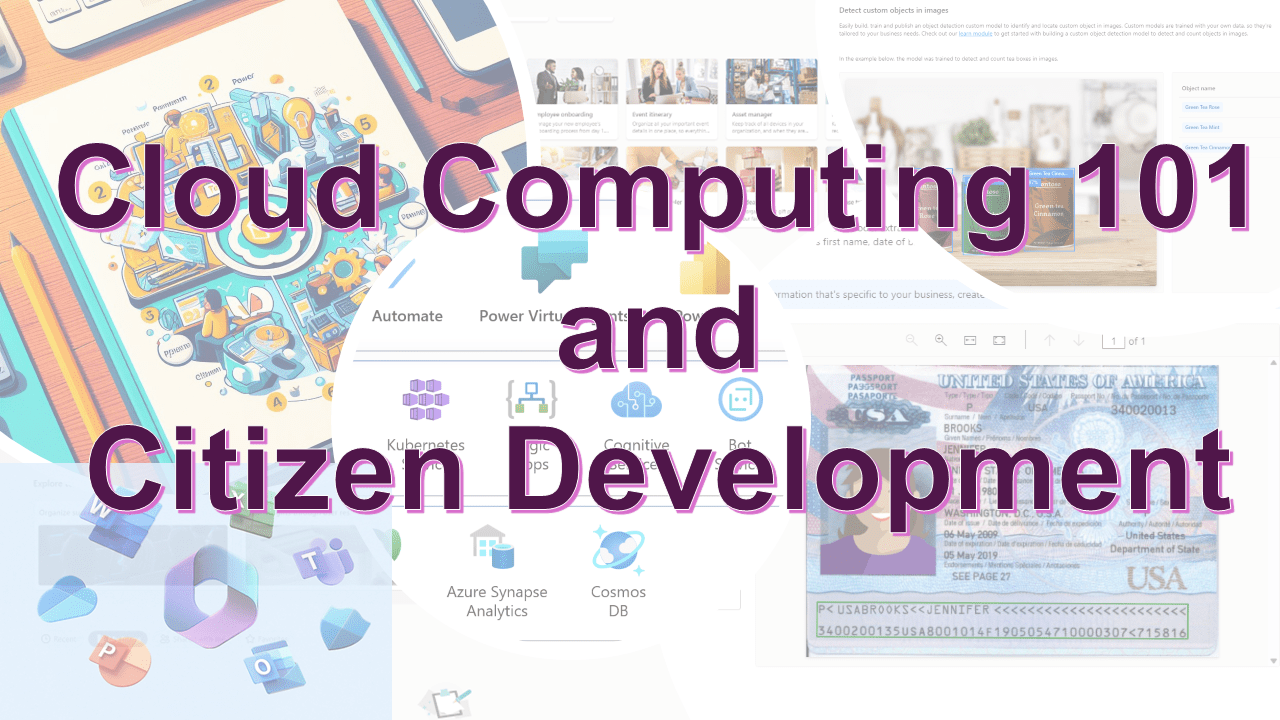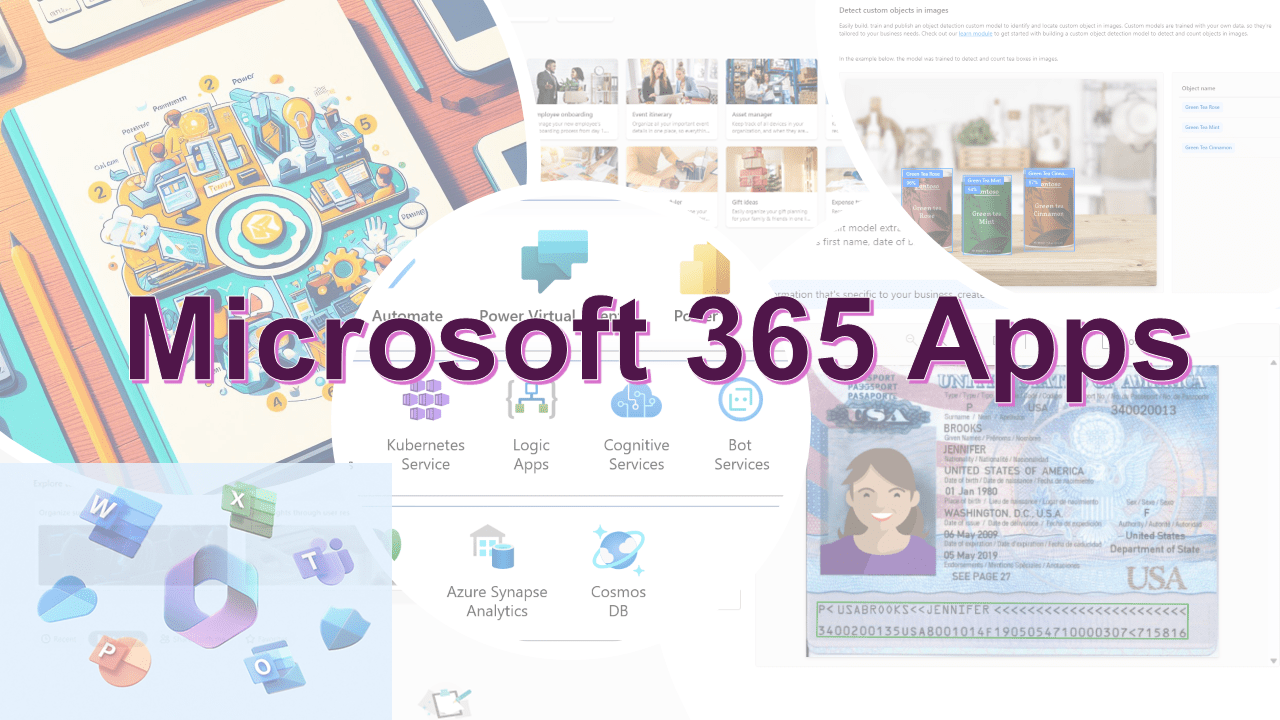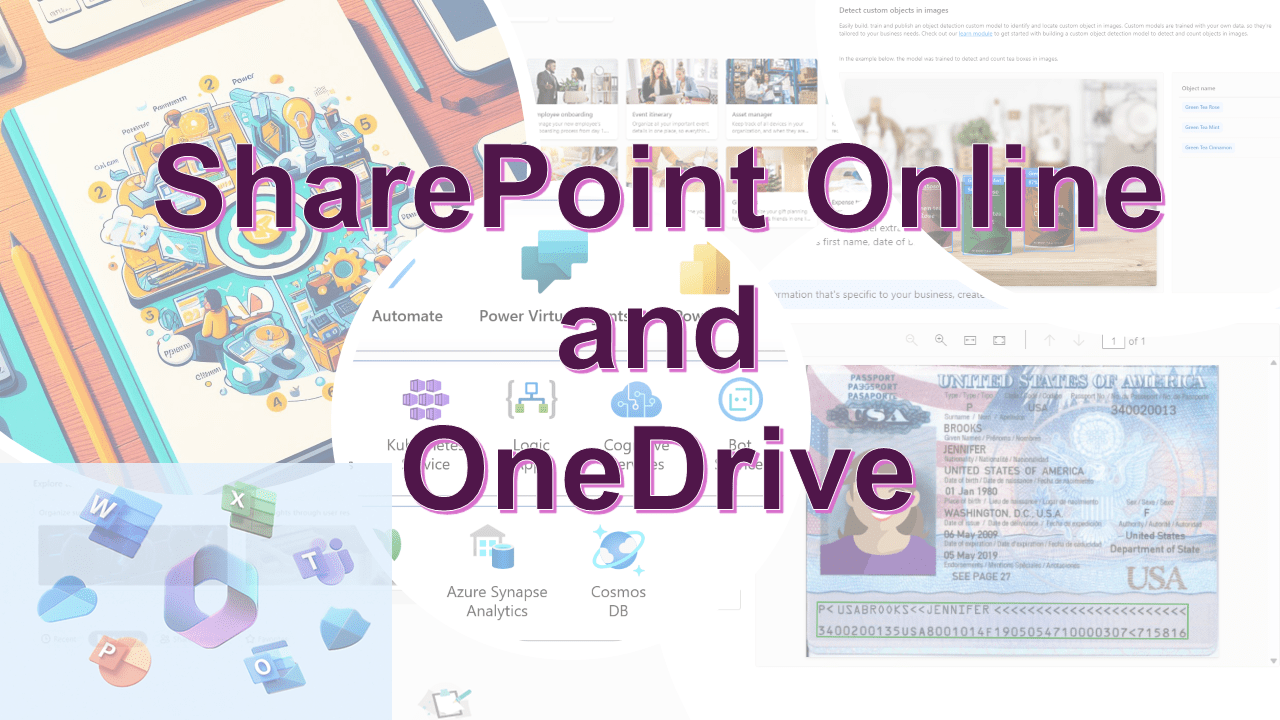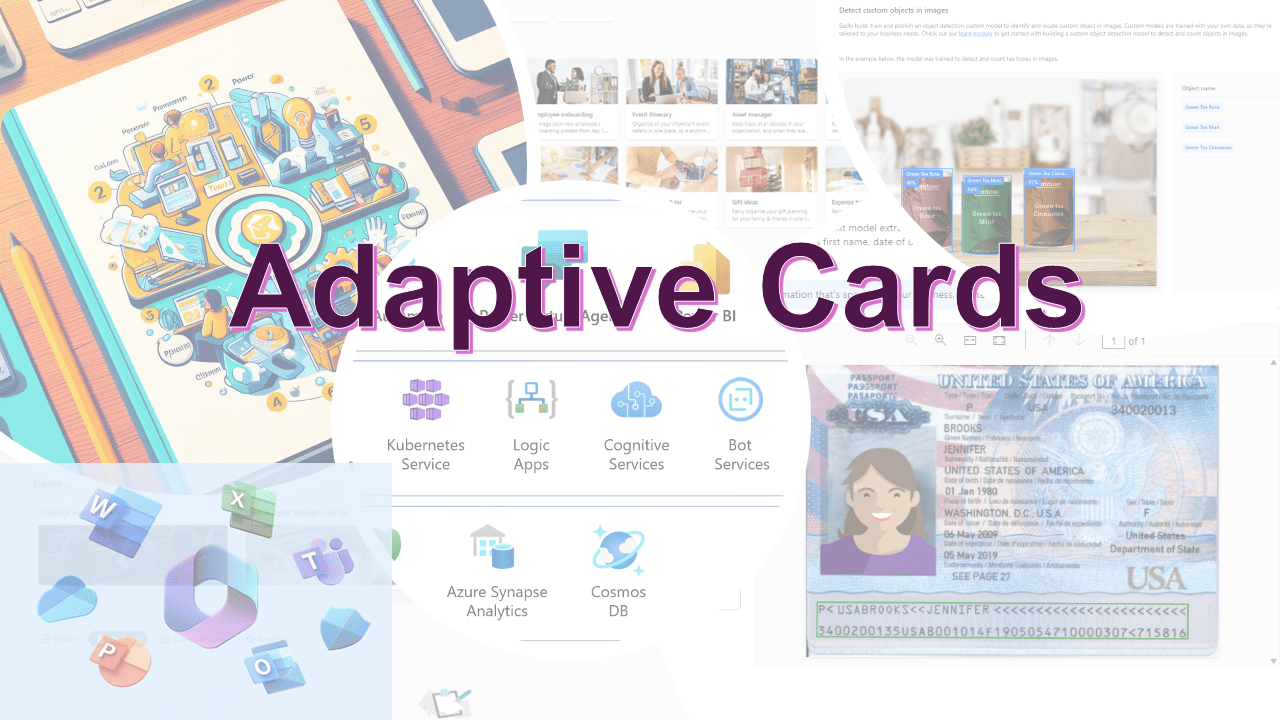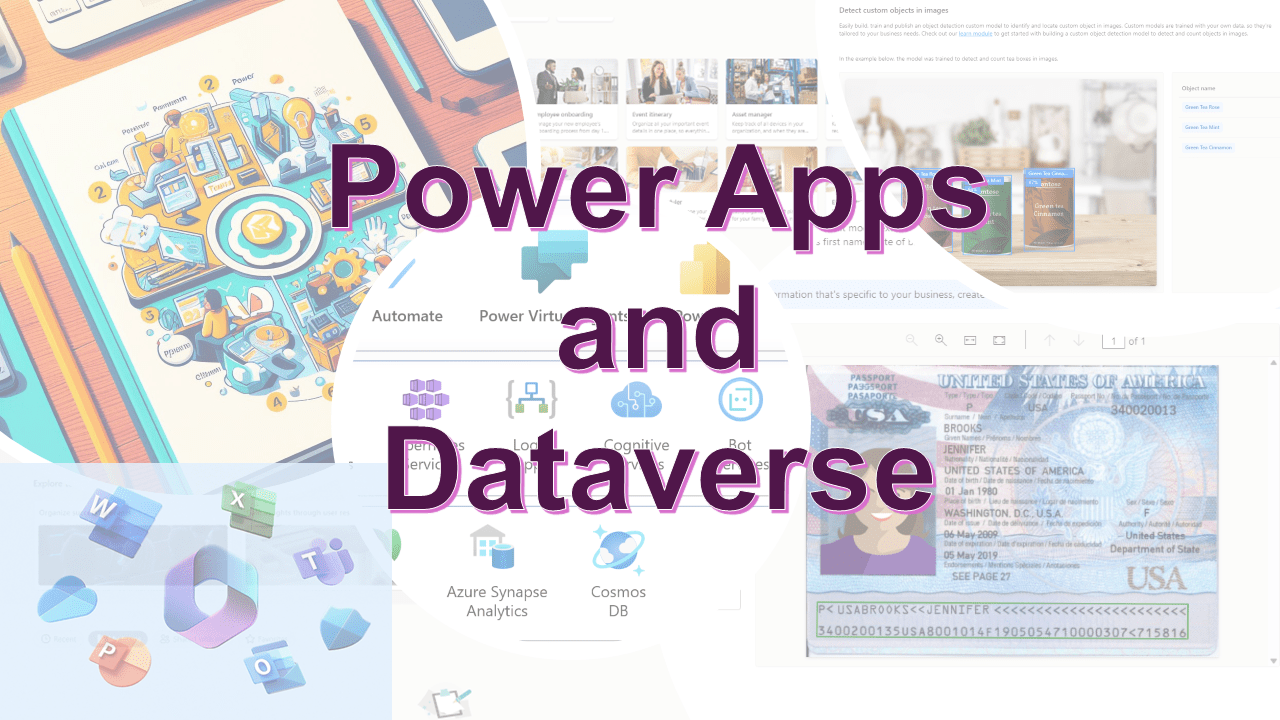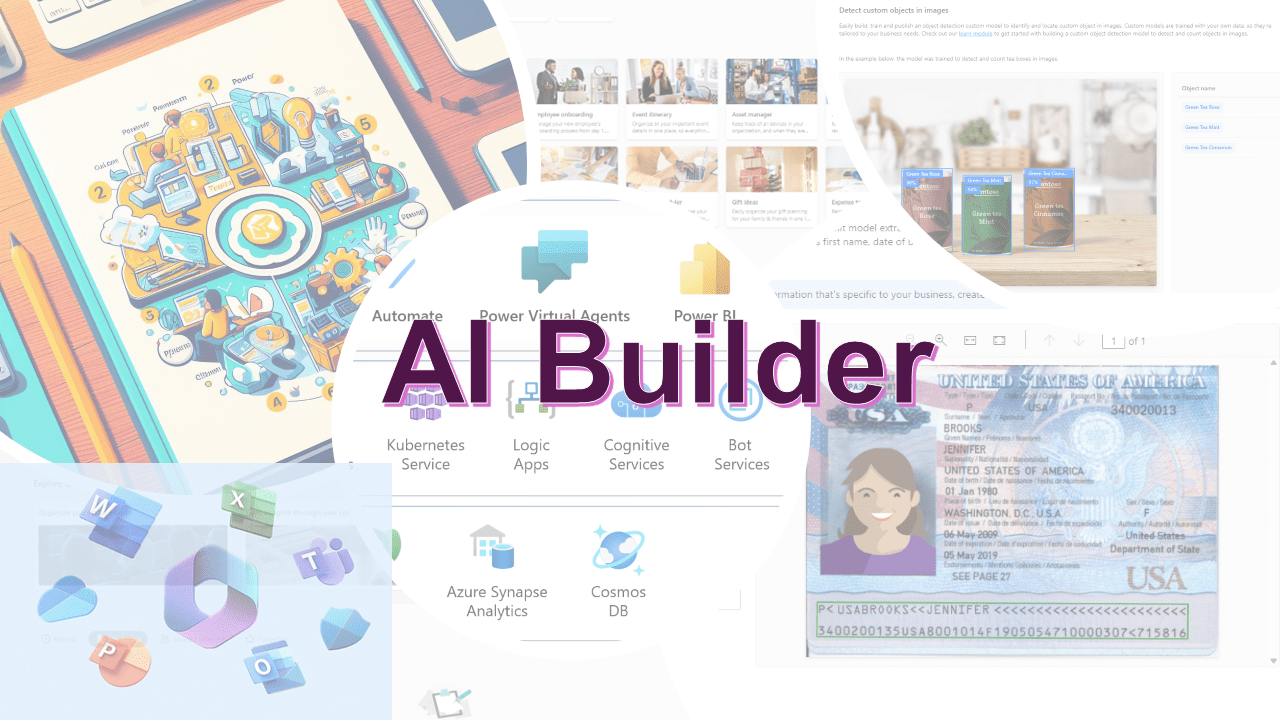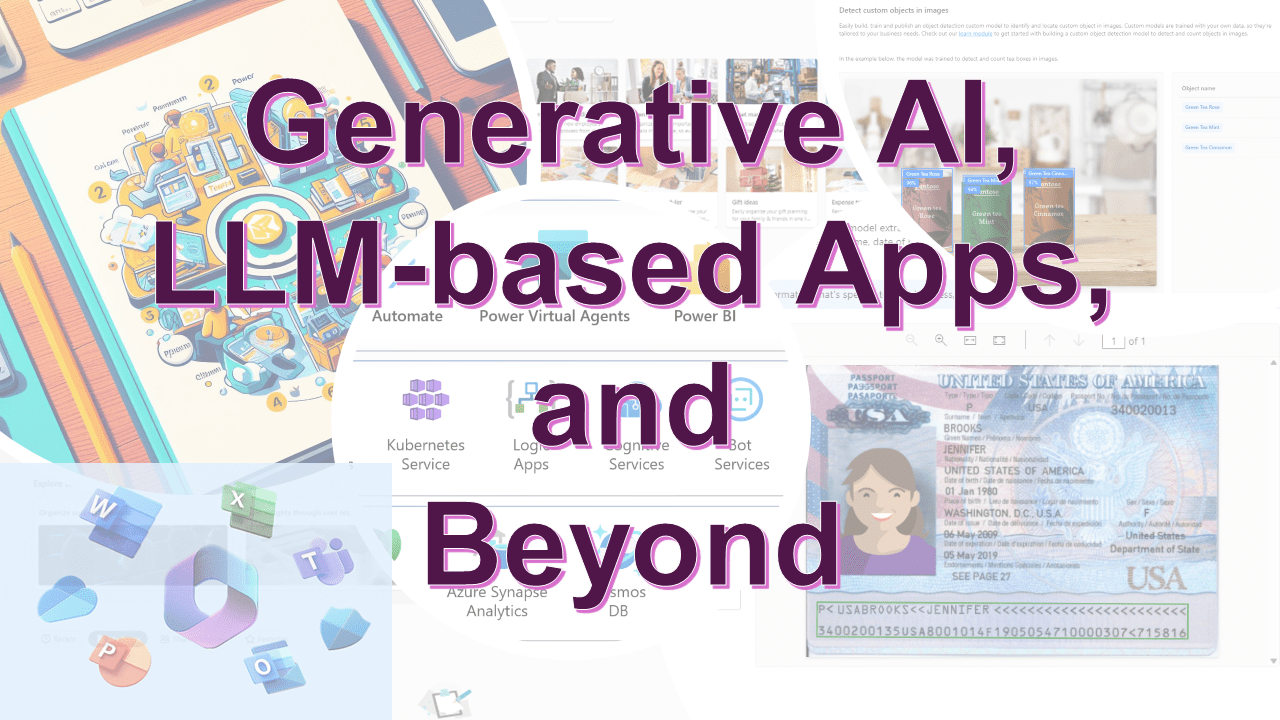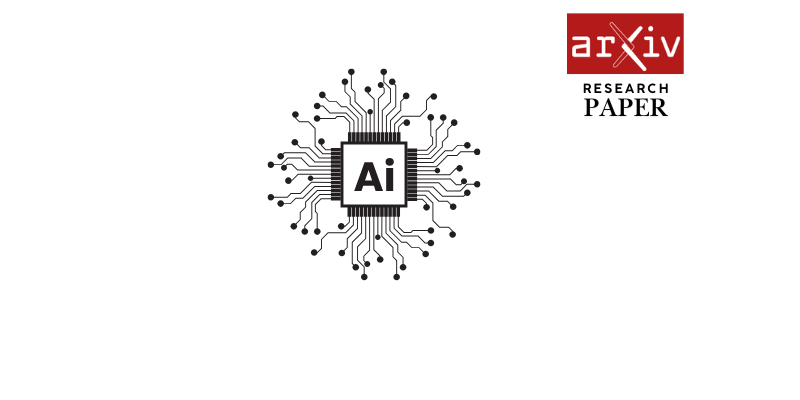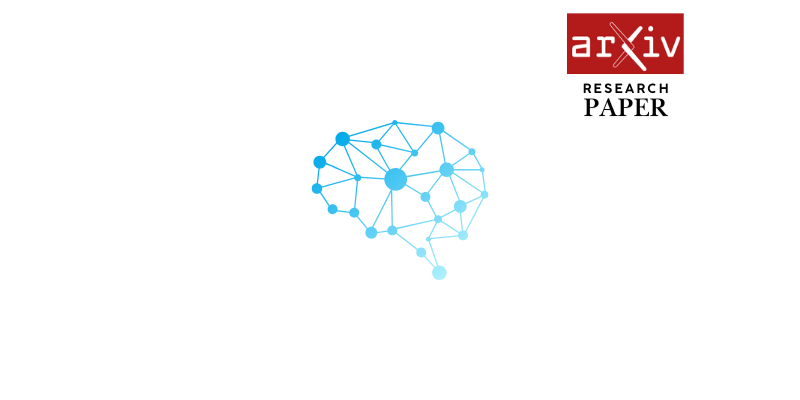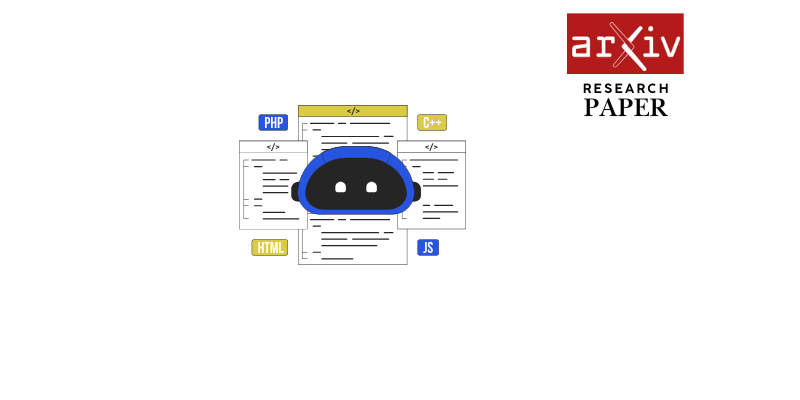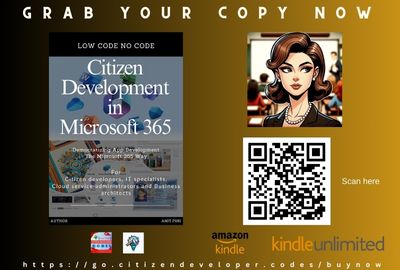Authors: Lin Long, Rui Wang, Ruixuan Xiao, Junbo Zhao, Xiao Ding, Gang Chen, Haobo Wang
Page 1:
On LLMs-Driven Synthetic Data Generation, Curation,
and Evaluation: A Survey
Lin Long1, Rui Wang1, Ruixuan Xiao1
Junbo Zhao1, Xiao Ding2, Gang Chen1, Haobo Wang1*
1Zhejiang University, China2Harbin Institute of Technology, China
Correspondence :wanghaobo@zju.edu.cn
Abstract
Within the evolving landscape of deep learning,
the dilemma of data quantity and quality has
been a long-standing problem. The recent ad-
vent of Large Language Models (LLMs) offers
a data-centric solution to alleviate the limita-
tions of real-world data with synthetic data gen-
eration. However, current investigations into
this field lack a unified framework and mostly
stay on the surface. Therefore, this paper pro-
vides an organization of relevant studies based
on a generic workflow of synthetic data gen-
eration. By doing so, we highlight the gaps
within existing research and outline prospec-
tive avenues for future study. This work aims
to shepherd the academic and industrial com-
munities towards deeper, more methodical in-
quiries into the capabilities and applications of
LLMs-driven synthetic data generation.
1 Introduction
The game-changing emergence of Large Language
Models (LLMs) instigated a significant paradigm
shift in the field of deep learning (Zhang et al.,
2023a; Guo et al., 2023; Bang et al., 2023). Despite
these advancements, a large amount of high-quality
data remains the foundation for building robust
NLP models (Gandhi et al., 2024). To be more
specific, here high-quality data typically refers to
diverse data that carries rich supervision signals
(generally in the form of labels) closely aligned
with human intent. However, fulfilling such data
reliance with human data can be challenging or
even unrealistic sometimes, due to high costs, data
scarcity, privacy concerns, etc. (Kurakin et al.,
2023). Moreover, several studies (Hosking et al.,
2023; Singh et al., 2023; Gilardi et al., 2023) have
highlighted that human-generated data, being inher-
ently susceptible to biases and errors, may not even
be optimal for model training or evaluation. These
considerations necessitate a more serious inquiry
*Corresponding author.
ClinicalTrialsHealthcareAnalyticsTable Analysis
SyntheticDataLLM
PromptPrompt𝒳SynthesisAnnotationSynthetic DataCuration
EvolvementLLM+LM1LM2LMn…Training/Fine-TuningGenerationSyntheticDataGenerationDownstreamApplication 1
DownstreamApplication 2Figure 1: Illustration of the LLMs-based application
ecosystem, where synthetic data serves as the flow-
ing nutrients for fruiting (training of small LMs or
fine-tuning task-specific LLMs) and rooting (training
stronger LLMs or self-improvement).
into the question: are there other more effective
and scalable methods of data collection that can
overcome the current limitations?
Given the recent advancements in LLMs, which
demonstrate the capability to generate fluent text
on par with human output (Hartvigsen et al., 2022;
Sahu et al., 2022; Ye et al., 2022a; Tang et al.,
2023; Gao et al., 2023a), synthetic data produced
by LLMs emerges as a viable alternative or supple-
ment to human-generated data. Specifically, syn-
thetic data is designed to mimic the characteristics
and patterns of real-world data (Liu et al., 2024).
On the one hand, LLMs, through extensive pretrain-
ing, have acquired a vast repository of knowledge
and demonstrate exceptional linguistic comprehen-
sion (Kim et al., 2022; Ding et al., 2023a), which
forms a foundation for generating faithful data. On
the other hand, the profound instruction-following
capabilities of LLMs allow better controllability
and adaptability over the generation process, facili-
tating the creation of tailored datasets for specific
applications with more flexible process designs (El-
dan and Li, 2023). These two advantages make
LLMs highly promising synthetic data generators.
As a pivotal application of LLMs, synthetic data
1arXiv:2406.15126v1 [cs.CL] 14 Jun 2024
Page 2:
generation holds significant importance for the de-
velopment of deep learning. As shown in Figure 1,
LLMs-driven synthetic data generation (Li et al.,
2023c; Wang et al., 2021; Seedat et al., 2023) en-
ables the automation of the entire model training
and evaluation process with minimal human partic-
ipation required in the loop (Huang et al., 2023),
which allows the advantages of deep learning mod-
els to be applied across a broader range of appli-
cations. Beyond providing a scalable supply of
training and testing data, LLM-driven synthetic
data generation also may pave the way for develop-
ing next-generation LLMs. Insights from TinySto-
ries (Eldan and Li, 2023) and the Phiseries (Gu-
nasekar et al., 2023; Li et al., 2023b) emphasize that
data quality is crucial for effective model learning,
while LLMs empower us to actively “design” what
the models learn through data manipulation, signifi-
cantly enhancing the efficacy and controllability of
model training. As of June 2024, there are over 300
datasets on Hugging Face1that are tagged as “syn-
thetic”, with many mainstream LLMs leveraging
high-quality synthetic data for training, including
Alpaca (Taori et al., 2023), Vicuna (Zheng et al.,
2023), OpenHermes 2.5, and Openchat 3.5 (Wang
et al., 2023a).
Though seemingly straightforward, generating
synthetic datasets that simultaneously have high
correctness and sufficient diversity requires careful
process designs and involves a lot of tricks (Gandhi
et al., 2024), making LLMs-driven synthetic data
generation a non-trivial problem. While most
existing works generally target data generation
for various tasks (e.g., pre-training (Gunasekar
et al., 2023; Li et al., 2023b; Eldan and Li, 2023),
fine-tuning (Mukherjee et al., 2023; Mitra et al.,
2023; Xu et al., 2023a), evaluation (Feng et al.,
2023; Wei et al., 2024)) across different domains
(e.g., math (Yu et al., 2023a; Luo et al., 2023a),
code (Luo et al., 2023b; Wei et al., 2023b), instruc-
tion (Honovich et al., 2023a; Wang et al., 2023d)),
they share many common ideas. To address the
lack of a unified framework in the emerging field of
LLM-driven synthetic data generation and develop
a general workflow, this survey investigates recent
studies and organizes them according to the topics
of generation, curation, and evaluation, which are
closely related, as shown in Figure 2. Our primary
aim is to provide a comprehensive overview of the
current state of the field, identify key areas of focus,
1https://huggingface.coand highlight the gaps that remain to be addressed.
We hope to bring insights to both the academic and
industrial communities and drive further develop-
ment in LLM-driven synthetic data generation.
2 Preliminaries
2.1 Problem Definition
In this paper, we investigate the challenge of
generating high-quality synthetic data using pre-
trained LLMs, denoted as M. Rather than creat-
ing new datasets from scratch, in more cases, we
perform data augmentation with a small number
of seed samples or unlabeled inputs, which we
denote uniformly as Dsup. Although optional for
LLMs-driven synthetic data generation, Dsupcan
typically provide valuable supporting information
when available. Consequently, the overall genera-
tion task can be formulated as:
Dgen← M p(T,Dsup), (1)
where Dgenrepresents the final generated dataset,
andprefers to the prompt used for model inference.
Tspecifies the generation task, such as rewrit-
ing, question answering, annotation, etc. Notably,
data annotation as a specialized paradigm of syn-
thetic data generation, has particularly extensive
applicability, including RLAIF (Bai et al., 2022)
and LLMs-based evaluation (Chen et al., 2023b;
Zheng et al., 2023; Kim et al., 2023), which may
involve specific challenges and corresponding so-
lution techniques. Due to page limitations, further
details about data annotation can be found in Ap-
pendix A.
2.2 Requirements of Dgen
Briefly speaking, our goal is to generate data that
closely aligns with evaluation metrics. While the
standard of high-quality data may vary across dif-
ferent downstream tasks, there are two general re-
quirements that are considered challenging in most
existing literature:
•Faithfulness. To provide valid supervision,
the generated data must first be logically and
grammatically coherent. However, the inher-
ent problems of hallucination fat-tailed knowl-
edge distribution of LLMs can introduce sig-
nificant noise into the generated results, man-
ifesting as factual errors, incorrect labels, or
irrelevant content. These issues become more
pronounced when generating long, complex,
or domain-specific data.
2
Page 3:
I
II
IIIGenerationCurationEvaluationPrompt EngineeringTask SpecificationGeneration ConditionsIn-Context DemonstrationsConditioningScopeConditioningValuesDemonstration AcquirementDemonstration SelectionMulti-Step GenerationSample-Wise DecompositionDataset-Wise Decomposition
Sample FilteringLabel EnhancementHeuristic MetricsRe-Weighting StrategiesLearning Dynamics BasedConsistency BasedManual Re-AnnotationAuxiliary Model EnhancementSample Selection Knowledge DistillationLabel RefineryDirect Evaluation
Indirect EvaluationData FaithfulnessData DiversityBenchmark EvaluationHuman EvaluationAuxiliary Model EvaluationVocabulary StatisticsSample RelevanceBenchmark EvaluationOpen EvaluationHuman EvaluationModel EvaluationAutomatic Annotation (App. A)Metric BasedModeling Baseda special caseFigure 2: A taxonomy of LLMs-driven synthetic data
generation, curation, and evaluation.
•Diversity. Diversity captures the variation
among the generated data, reflecting differ-
ences in text length, topic, or even writing
style. It is crucial for generating synthetic
samples that mimic the diversified nature of
real-world data, thereby preventing overfitting
and bias during model training or evaluation.
Nevertheless, due to the inherent biases of
LLMs, uncontrolled generated content often
tends to be monotonous, limiting its applica-
bility in downstream tasks.
These two requirements are the focal points of most
current research efforts. In the subsequent work-
flow, we will introduce how different methods ad-
dress these issues.
3 Generic Workflow
Existing studies on LLMs-driven synthetic data
generation generally incorporate three main top-
ics: generation, curation, and evaluation. Various
approaches are employed within these aspects to
collaboratively achieve optimal data generation.
3.1 Data Generation
In this section, we systematically summarize some
common practices for synthetic data generation
with LLMs, which can be roughly divided into
prompt engineering and multi-step generation. An
overall illustration is provided in Figure 3.3.1.1 Prompt Engineering
One of the greatest advantages of LLMs for syn-
thetic data generation is their instruction-following
capability, which contributes to great controllability
(Wang et al., 2023c; Radford et al., 2019). There-
fore, many approaches try to guide LLMs with
heuristic prompts to enhance the faithfulness and
diversity of the synthetic data (Liu et al., 2024).
Empirically, an effective prompt generally con-
tains three key elements: task specification etask,
generation conditions econdition , and in-context
demonstrations edemo, which are then collectively
wrapped with a template Einto the form of natural
instruction:
p(T,D)←E(etask, econdition , edemo). (2)
As shown above, both the generation task Tand
the support dataset Dwill affect the design of p.
Next, we will proceed to detail how each part of
the prompt should be appropriately designed to
accommodate various scenarios.
Task Specification. In traditional crowdsourced
annotation scenarios, the recruited workers are
commonly offered a codebook that specifies the
necessary contexts, such as task purpose, data ex-
planation, and other background knowledge, so
that they can better understand their jobs (Gilardi
et al., 2023). Similarly, such task specification
is crucial for setting the right context for LLMs-
driven data generation, which can also include role-
play (Li et al., 2023c), format clarification, knowl-
edge augmentation (Xu et al., 2023b; Sudalairaj
et al., 2024), etc. Evidence shows that a simple
prologue such as “suppose you are a {xxx} ” can
significantly improve the LLMs’ performance by
setting up a proper scenario for data generation and
allowing the LLMs to better take on the roles (Li
et al., 2023c). More formally, Yoo et al. (2021) de-
fines the task specification with a triplet of text type,
label type, and label-token verbalizer. Such a de-
scription header is particularly important when ex-
tra domain expertise is demanded to address issues
like terminology complexities in both context un-
derstanding and data generation. Consequently, Xu
et al. (2023b) leverages external knowledge graphs
and LLMs to obtain domain topics for context-
informed prompting, which effectively enhances
the faithfulness and complexity of generated data.
Conditional Prompting. As mentioned in Sec-
tion 2.2, a pivotal challenge in using LLMs for
3
Page 4:
LOW-Quality Data
Prompt2
❌
✅HIGH-Quality DataPlease generate a negative movie review.Example Prompts in Existing Literature
Prompt for Data Synthesis (AttrPrompt, Yu et al., 2023)Suppose you are a news writer. Please generate affordable care act news in NYT following requirements below:1. Should focus on role of state governments;2. Should be in length between 30 and 80 words;3. The writing style of the news should be news analysis;4. The location of the news is in Oceania.
Prompt1List some words that reflect negative sentiment. ChatGPT
p
D
Here are some words that reflect negative sentiment:1.Angry - Feeling or showing strong annoyance, displeasure, or hostility.2.Sad …3.Disappointed …
Prompt for Data Annotation (App. A) -- A Special Case(LLMAAA, Zhang et al., 2023)You are a highly intelligent and accurate news domain named-entity recognition (NER) system. You take passage as input and your task is to recognize and extract specific types of named entities in that given passage and classify into a set of following predefined entity types: [PER,LOC,ORG,MISC] Your output format must be in json form of: [{"span":span,"type”:type},…]Input: … Output: …Input: Soccer – late goals give Japan win over Syria. Output:
Y
pX
Prompts for Sample-Wise Multi-Step Generation (Self-Prompt, Li et al., 2023)
LLM ReponsesList some historical events:
D-Day, The Battle of Gallipoli, The Black Death, …This is a passage from Wikipedia about the historical even, The battle of Gallipoli:The Battle of Gallipoli … and to open up a supply route to Russia through the Dardanelles and … a million men.Here is a passage: The Battle of Gallipoli was … over half a million men. Extract the named entities in it:April 1915, …, Dardanelles, the Black Sea, …The Battle of Gallipoli was … over half a million men. Dardanelles is the answer to the question:What is the name of the waterway that was the site of the Battle of Gallipoli?The Battle of Gallipoli … million men. Question: What is the name of the waterway that was the site of the Battle of Gallipoli? Answer: Dardanelles. You can refer to the passage and write a short explanation to this Question-Answer pair:The Battle of Gallipoli was fought along the Dardanelles, a waterway that connects the Aegean Sea to the Sea of Marmara.ExamplePassageEntityQuestionExplain (Complete Sample)Example of Integrated Pipeline of Generating High-Quality Data (for Sentiment Analysis)
ChatGPT"Black Panther: Wakanda Forever" plunges into a chasm of cinematic disappointment. Its glaring lack of coherence, stitched together with feeble narrative threads, is a disservice to its predecessor's legacy. ……
➕Negative[Label][Text]SampleAssemble
🟰
Suppose you are a movie reviewer. Please generate a movie review to show your <disappointment> about the movie <Black Panther: Wakanda Forever> with detailed explanation, following requirements below:1. Should be in length <between 30 and 80 words>;2. The writing style of the review should be <intense>;3. Suppose the time you write this review is <immediately after watching the movie>.Here are some examples about other movie reviews:<movie review 1><movie review 2><movie review 3>Figure 3: A toy example of effective synthetic data generation. The corresponding fields for task specification ,
conditions , and in-context demonstrations are highlighted, while < > marks the switchable contents.
synthetic data generation is ensuring sufficient di-
versity, as directly prompting the LLMs to produce
data for certain tasks often results in highly repet-
itive outputs, even with a high decoding temper-
ature (Gandhi et al., 2024; Liu et al., 2024). Ad-
dressing this problem, a widely adopted strategy is
conditional prompting, which explicitly and con-
cretely communicates to the LLMs the specific type
of data desired. The core of conditional prompting
involves delineating the targeted data through the
formulation of a series of condition-value pairs:
econdition ={(c1, v1),(c2, v2),···,(cn, vn)}, (3)
which effectively characterizes the desired at-
tributes and characteristics of the synthetic data.
With different combinations of such attributes, we
can automatically achieve a degree of “artificiallydefined” diversity in the generated samples (Gu-
nasekar et al., 2023; Li et al., 2023b; Eldan and
Li, 2023). Conditional prompting not only allows
better control over the diversity and coverage of
the generated dataset but also refines the content
to a narrower, more focused scope that is more
likely to align with our specific expectations and
requirements (Li et al., 2023c). Current research
on conditional prompting primarily centers on the
following two subjects:
1)Conditioning Scope. As the backbone
ofecondition , conditioning scope defined by
{c1,···, cn}delineates the dimensions that
we utilize to characterize our target data. Early
studies (Gao et al., 2023a; Ye et al., 2022a,b)
employed a basic output-conditional prompt-
ing strategy, utilizing the specific label asso-
4
Page 5:
ciated with the classification task as the con-
ditioning variable. The rationale behind this
was primarily to maintain class balance and
coverage. However, such a strategy is unsuit-
able for data lacking explicit category labels.
Subsequent work by Yu et al. (2023b) argues
that conditional-prompting with finer-grained
attributes (e.g., topics, length, and style (Xu
et al., 2023b)), can lead to more diversified
generation due to the vast number of possi-
ble attribute combinations, being also applica-
ble to open-ended data. Additionally, Eldan
and Li (2023) also condition each generation
on the task of incorporating three randomly
chosen words into the generated story. This
approach was also proven to significantly en-
hance the diversity of the generated data, shift-
ing the focus from the heuristic features of the
output to a more structured and targeted con-
ditioning mechanism by adding “creative ran-
domness” to the prompt (Eldan and Li, 2023).
2)Conditioning Values. After defining the con-
ditioning scope, we then need to assign con-
crete values to each condition. Despite the
seemingly straightforward strategy of sam-
pling from the known classes or labels (Ye
et al., 2022a), there are cases where such an
instance pool is unavailable. Addressing this
problem, Josifoski et al. (2023) actively re-
trieves the conditioning instances from exter-
nal knowledge graphs, while Xu et al. (2023b);
Ding et al. (2023b) leverage the LLMs to
generate diversified instances for conditional
prompting. Specifically, Ding et al. (2023b)
construct a concept tree to delve into different
subtopics, ensuring the coverage of sampled
conditioning values, which then contributes
to more diverse generated data. Moreover, the
prompt template Ecan also be considered a
special type of condition. It has been demon-
strated that incorporating templates with a cer-
tain level of randomness throughout the gen-
eration process can enhance the diversity of
the generated contents (Meng et al., 2022).
In-Context Learning. Due to the inherent bias
of LLMs, it remains challenging to elicit favorable
responses from the LLMs with merely task speci-
fication and conditional prompting. In this case, a
straightforward yet effective strategy is to provide
several demonstrations, which can serve as a form
of implicit human guidance. Research has shownthat, owing to LLMs’ remarkable in-context learn-
ing (ICL) capabilities, a few exemplars can provide
them with insights into the patterns exhibited in
real-world data, thereby significantly improving
the faithfulness of generated data (Li et al., 2023c).
In the few-shot setting, where labeled samples are
available in the support set Dsup, these samples
can be directly utilized as demonstrations for ICL.
However, in scenarios where no ground truth data
is available, approaches like Self-Instruct (Wang
et al., 2023e) and Self-Prompting (Li et al., 2022)
instead leverage ICL with synthetic demonstrations
generated by LLMs. This allows the models to
learn from their own predictions or other teacher
models, even in the absence of labeled data.
However, given the constraint of prompt length
and data inconsistency, the quality of in-context
samples significantly affects the effectiveness of
in-context learning. Sudalairaj et al. (2024) ar-
gue that randomly selecting in-context examples
from the pool of seed samples, as done in Self-
Instruct (Wang et al., 2023e), results in a lack of
diversity and quality in the generated data. To ad-
dress this issue, Sudalairaj et al. (2024) opt for
selecting examples that concentrate on specific as-
pects to better stimulate the long tail of knowledge
inherent in LLMs. Liu et al. (2022b) and Su et al.
(2023) prioritize consistent samples as demonstra-
tive examples based on their cosine similarity in the
embedding space. Alternatively, Ye et al. (2022b)
selects the most informative samples using quanti-
fied influence scores to steer the generation process.
To enhance the informativeness of in-context ex-
amples, He et al. (2023) prompts LLMs to provide
an explanation for each sample before integrating
it into the prompt. This approach not only offers
valuable additional information but also aligns well
with the subsequent Chain-of-Thought generation.
3.1.2 Multi-Step Generation
In the previous paragraphs, we have introduced
some common prompting strategies, which are
typically designed for a specific generation task
T. However, in most cases, due to the lack of
enough reasoning abilities, it is unrealistic to ex-
pect the LLMs to generate the entire desired dataset
within a single reference, especially when target-
ing data with complex structures or semantics (Cui
and Wang, 2023). In addressing this problem, a
common strategy is multi-step generation, through
which the overall generation process is manually
decomposed into a chain of simpler sub-tasks T1:k,
5
Page 6:
to force the LLMs to produce data in a step-by-step
manner as scheduled:
Di← Mi
pi(Ti,D0:i−1), i= 1,2,···, k, (4)
where D0=Dsup. Each intermediate output Di
is generated using model Mi, prompted by pi,
for a sub-task Ti. These outputs can then po-
tentially be used in subsequent generations. By
manually scheduling the generation procedure,
we implicitly align the reasoning paths of LLMs
with human prior knowledge. Specifically, there
are two common strategies for task decomposi-
tion: sample-wise anddataset-wise decomposition,
which mainly aim at enhancing the quality of syn-
thetic data at different scales.
Sample-Wise Decomposition. A typical use-
case of multi-step generation is for addressing the
challenges of long-text processing and logical rea-
soning when dealing with multi-text data such as
dialogues and entity-relation triplets. In such cases,
a straightforward approach is to divide the sample
into smaller chunks and generate only a portion
of each sample at a time (Li et al., 2022; Ye et al.,
2023; Wang et al., 2023e). In this way, D1:kcan be
considered as different parts of Dgen:
Dgen= (D1,D2,···,Dk). (5)
Notably, as shown in Eq. 4, each iteration of the
generation process can be conditioned on the previ-
ously generated contents. For example, Ding et al.
(2023b) prompts the LLMs to alternate between
acting as the assistant and the user, replying to each
other based on the context, ultimately producing
a complete conversation transcript. In this way,
the coherence among each internal component Di
can be pointedly reinforced with separated instruc-
tions, thus making it easier for the model to follow
the requirements and generate more faithful data.
It should be noted that D1:kmay not necessarily
form part of the final Dgen, instead, explicitly out-
putting some intermediate reasoning steps can also
improve the generation of complex data (Bai et al.,
2022; He et al., 2023). Chain-of-Thought (CoT)
prompting stands out as one of the most popular
strategies for improving the faithfulness of LLM-
generated content (Wei et al., 2022). Nevertheless,
current research on the exploration of such latent
metadata is still insufficient, leaving sample-wise
task decomposition from a reasoning perspective
an open problem for future studies.Dataset-Wise Decomposition. In Section 3.1.1
we have introduced how to generate data with spec-
ified properties. However, generating a series of
such data that can eventually form a dataset with
good diversity and domain coverage requires long-
term scheduling. To this end, dataset-wise task
decomposition dynamically adjusts the conditions
used at each stage of multi-step generation to en-
sure the overall dataset grows in the right direction:
Dgen=k[
i=1Di. (6)
Specifically, S3 (Wang et al., 2023b) targets the
most frequently mislabeled categories at each iter-
ation, according to the performance of the down-
stream model trained on previously generated data.
Similarly, Honovich et al. (2023b); Shao et al.
(2023) utilize a generate-then-expand paradigm, to
enhance the diversity of the overall dataset accord-
ingly. Some other methods also leverage specific
data structures to model the pathways of data gen-
eration. For example, Explore-Instruct (Wan et al.,
2023) models the domain space as a tree structure
and continually refines the generated data along
with tree traversal to promote both the specializa-
tion and domain coverage of the generated data.
3.2 Data Curation
After the preceding steps, one may excessively gen-
erate overflowing and theoretically unlimited data
Dgen. However, these datasets often comprise a
considerable portion of noisy, worthless, or even
toxic samples, which primarily stems from two
causes. Firstly, LLMs can inevitably produce cor-
rupted samples with incorrect labels due to the hal-
lucination problem. Secondly, ineffective prompts
containing ambiguous descriptions can trick the
model into generating irrelevant or redundant sam-
ples. Consequently, directly utilizing these low-
quality data without proper processing may have a
significant negative impact.
To address this, plenty of data curation ap-
proaches have been studied, which mainly fall into
two dominant groups of high-quality sample filter-
ingandlabel enhancement as elaborated below.
3.2.1 High-Quality Sample Filtering
Sample filtering aims to weed out undesired low-
quality samples and obtain a more helpful sub-
setDcurated⊂ D gen. These methods typically de-
sign heuristic criteria orre-weighting functions to
rerank samples for filtering, as shown in Figure 4.
6
Page 7:
Metric CalculatingUntailored SetFiltered SetRerank/Reweightselecteddiscarded
Untailored SetRefined SetHuman InterventionAuxiliary Distillation
Student ModelLLMsample indexstatistic
feedbacklow-quality dataActive SelectionHumanRe-labeling
distillHigh-quality Sample FilteringLabel EnhancementDgenDgenDcuratedDcuratedFigure 4: Two dominant approaches of data curation.
Heuristic Metrics. For methods based on heuris-
tic metrics, the key step is to design appropriate
criteria based on the learning dynamics, such as
confidence score (Seedat et al., 2023), influence
function (Ye et al., 2022b), and generation abil-
ity (Meng et al., 2022). SuperGen (Meng et al.,
2022) employs the estimated generation probability
to identify samples most related to the desired la-
bel. Seedat et al. (2023) discard samples with both
low confidence and low uncertainty. Some other
methods assume that clean samples are prone to
hold similar predictions under different conditions
and employ cross-condition consistency for filter-
ing. Specifically, such consistency can be between
LLM and downstream classifier (Yu et al., 2023c),
between multiple executions (Ye et al., 2023), or be-
tween neighboring data points (Seedat et al., 2023).
Chen et al. (2023b) leverage the powerful text un-
derstanding capabilities of LLMs to assess the qual-
ity of different samples and filter out those with
low scores. Results show that Alpagasus (Chen
et al., 2023b), trained on a much smaller but cu-
rated dataset, surpasses the original Alpaca (Taori
et al., 2023) across several benchmarks, underscor-
ing the importance of data curation.
Sample Re-Weighting. On the other hand, re-
weighting methods believe all data are valuable but
with varying importance. Thus, they assign larger
weights to correctly annotated or influential sam-
ples during downstream utilization (Zhang et al.,
2023b; Gao et al., 2023a; Meng et al., 2023). For
instance, SunGen (Gao et al., 2023a) proposes an
adaptive bi-level re-weighting algorithm without
human annotations. FewGen (Meng et al., 2023)
designs a discriminative meta-learning objective to
adjust sample weights and demarcate the nuanced
differences between different labels.3.2.2 Label Enhancement
Label enhancement methods strive to rectify the
potentially erroneous annotations in generated sam-
ples. Due to confirmation bias, it is unrealistic for
LLMs to identify their own mistakes. To address
this, recent works either rely on human interven-
tionor incorporate a student model for human-free
knowledge distillation .
Human Intervention. A straightforward strat-
egy for label refinery is to include human efforts
to re-annotate the corrupted samples (Chung et al.,
2023a; Wang et al., 2021; Pangakis et al., 2023).
Wang et al. (2021) proposed to actively select
samples with the lowest confidence for human
re-labeling. Pangakis et al. (2023) and Liu et al.
(2022a) further emphasize the importance of hu-
man review and suggest comparing annotations
from humans and LLMs guided by the same code-
book. Despite the simplicity, these methods can
lead to considerable labeling costs and can be unre-
alistic in practical deployment.
Auxiliary Model. To reduce the labeling cost, a
more pragmatic human-free paradigm is developed
which involves auxiliary student models for knowl-
edge distillation and label refinery (Xiao et al.,
2023; Zhao et al., 2023a; Saad-Falcon et al., 2023).
These methods rely on the weakly supervised abil-
ity of student models and hypothesize that a stu-
dent distilled from the LLM teacher can produce
superior labels. The seminal work FreeAL (Xiao
et al., 2023) proposes a collaborative framework,
where a student model is leveraged to distill the
high-quality task-related knowledge from the weak
annotations and in return feedback LLMs for label
refinery. MCKD (Zhao et al., 2023a) designs a
multistage distillation pipeline with data-split train-
ing and cross-partition labeling to avoid overfitting
on noisy labels. With the expanding abilities and
availability of LLMs, the incorporation of auxiliary
student models will play a more crucial role as a
cost-effective alternative to human intervention.
3.3 Data Evaluation
Before the employment of generated data, it is im-
portant to evaluate the quality and application ef-
fectiveness of the data, to ensure its value to down-
stream tasks. The current mainstream evaluation
methods can be roughly divided into two categories:
direct andindirect , which evaluate the quality of
Dgenindividually and through its effectiveness on
downstream tasks, respectively.
7
Page 8:
Benchmark
Human
Model
Data Faithfulness
ModelSynthetic Data
Vocabulary StatisticsSample RelevanceData Diversity
Benchmark EvaluationClassification
QAReasoningII + III = IIIII……
Open EvaluationDirect Evaluation
Indirect Evaluation
Answer 1 > Answer 2Human Evaluation
Answer 1 √ Answer 2 ×Model Evaluation
Figure 5: Direct and indirect methods of data evaluation.
3.3.1 Direct Evaluation
Data Faithfulness. Ideally, automatic evaluation
of the LLMs’ generation results can be easily re-
alized with ground truths from existing datasets,
if available (Zhu et al., 2023). However, for open-
ended data, human-based evaluation is necessitated.
A straightforward idea is to provide some generated
samples to human experts, who will then determine
whether they are correct, according to which we
can estimate the overall generation quality (Wang
et al., 2023e). Theoretically, the larger the sample
size, the more accurate the estimation results will
be, but the labor it costs will correspondingly get
higher. To this end, a reliable auxiliary model can
be leveraged for a more comprehensive yet cost-
effective evaluation of the generated data in replace
of human experts (Chung et al., 2023b). Consider-
ing that most models can only process contents of
limited length, appropriate information extraction
can reduce the burden of the auxiliary model and
contribute to a more precise prediction of whether
a sample contains factual errors (Lee et al., 2022).
Data Diversity. The quantification of data diver-
sity primarily employs vocabulary statistics and
sample relevance calculations. V ocabulary statis-
tics (Yu et al., 2023b), such as vocabulary size
and N-gram frequency, provide a straightforward
and intuitive approach. However, they struggle
to capture the semantic information of a dataset.
The calculation of sample relevance compensates
for this limitation effectively. The most common
measures of sample correlation are based on co-
sine similarity (Wang et al., 2023b) and sample
distance (Chung et al., 2023b), which can better
capture the contextual and semantic diversity of
the dataset. Furthermore, these metrics can alsobe leveraged to select in-context demonstrations
edemo (Wang et al., 2023e) that are more dissimi-
lar with the previously generated samples, thereby
leading to more diversified generation results.
3.3.2 Indirect Evaluation
Benchmark Evaluation. The performance of
downstream models trained on the generated data
can also reflect the generation quality to some ex-
tent (Yu et al., 2023b; Chung et al., 2023b). Specif-
ically, the impact of synthetic data can be evaluated
from multiple dimensions except for the special-
ized capabilities of the downstream models. For
example, TruthfulQA enables the assessment of a
model’s ability to identify true claims (Sun et al.,
2023); NIV2 is employed to evaluate a model’s
language comprehension and reasoning abilities
across multiple tasks (Wang et al., 2023e).
Open Evaluation. For open-ended benchmarks,
evaluation by humans or auxiliary models is ne-
cessitated due to the absence of standardized an-
swers. To fully leverage the preference outputs of
the auxiliary models, multiple evaluation strategies
have been designed, such as response ranking (Xu
et al., 2023a), four-level rating system (Wang et al.,
2023e) and Elo scores (Bai et al., 2022). To further
reduce evaluation costs, Sun et al. (2023); Xu et al.
(2023a) utilize the automatic evaluation framework
based on GPT-4 proposed by Vicuna for evaluation.
However, general LLMs may lack enough knowl-
edge for domain-specific tasks, which hinders them
to provide effective evaluation (Bran et al., 2023).
Therefore, collecting human assessment data to
fine-tune open-source models for evaluation pur-
poses is an important practice in real-world scenar-
ios (He et al., 2023). Other techniques like (Peng
et al., 2024, 2023) remain to be further explored.
4 Future Directions
4.1 Complex Task Decomposition
Current multi-step generation algorithms depend
on the model’s understanding of task requirements,
requiring it to perform complex logical reason-
ing with limited information. However, in real-
world complex scenarios, this limited informa-
tion may not adequately support effective decision-
making. For instance, the generation of mathe-
matical problem-solution pairs entails multiple rea-
soning steps and may necessitate the utilization of
calculator tools for validation. To date, there re-
mains a lack of systematic investigation on how
8
Page 9:
to activate the reasoning and planning capabilities
of LLMs for autonomous synthetic data genera-
tion. Inspired by prevalent LLMs-based agents like
HuggingGPT (Shen et al., 2023) and MetaGPT
(Hong et al., 2023), we believe it would also be
quite valuable to develop a data generation agent
for industrial applications.
4.2 Knowledge Enhancement
Recent research has found that LLMs’ knowledge
is long-tailed and biased (Navigli et al., 2023; Fei
et al., 2023). Lacking specific domain knowledge,
LLMs tend to generate biased, monotonous, and
even unfaithful data. Though we have introduced
how to mildly guide the data generation with task
specification and conditional prompting in the pre-
vious sections, such methods still hold strong lim-
itations and are not conducive to scalable imple-
mentation. Instead, we believe that developing
automated condition controls directly on mature
domain knowledge bases will significantly improve
the efficiency of knowledge enhancement. For ex-
ample, we can establish certain links between the
LLMs and external knowledge graphs (Ji et al.,
2022) or retrieve augmentation from the website
(Gao et al., 2023b), which is helpful for the defini-
tion, decomposition, and reasoning of data features
throughout the entire generation process. Addition-
ally, with enhanced domain knowledge, we may
also better assess the quality of generated data or
even develop automatic evaluation systems. Over-
all, we believe that knowledge-driven data genera-
tion will be a key focus for future studies.
4.3 Synergy between Large & Small LMs
In Section 3.2, we introduced the use of small
domain-specific models for data curation. In par-
ticular, FreeAL (Xiao et al., 2023) has shown the
feasibility of low-cost data curation with integrated
collaboration between large and small models. The
idea of leveraging real-time feedback provided by
automated performance evaluation during the data
generation process to guide the corresponding ad-
justments in the following generation hints at an im-
portant research direction. However, the exploita-
tion of small LMs at the current stage is simply
based on prediction confidence. In the future, we
are looking forward to seeing more diversified col-
laboration modes between large and small models
to improve the quality of generated data, e.g., us-
age of various output information, new design of
collaborative architectures, and so on.4.4 Human-Model Collaboration
Data, as the source of model intelligence, theo-
retically cannot be generated completely without
human intervention. Otherwise, wild synthetic data
that carries noisy, toxic information can easily “poi-
son” a model, even resulting in mode collapse. Due
to the inherent bias of LLMs, they can hardly be
self-aware of the bias in their generated data and fi-
nally deviate from our intentions. Thus, designing a
human-friendly interactive system to involves a few
necessary human knowledge for annotation and ver-
ification is vital and irreplaceable. To date, there is
still a lack of a generic framework to standardize
and systematize the human-machine collaboration
involved in the data production process.
We believe that an appropriate design of such a
system must be based on a thorough understanding
of the strengths and limitations of human interven-
tion, and should follow the human-centered prin-
ciple. To achieve sustainable and efficient human
involvement, we need comprehensive considera-
tion of various factors such as feasibility, cost, and
even labor psychology. For specific examples: (i)-
readability and interpretability of the information
provided by the LLMs should be ensured to reduce
obstacles to human understanding; (ii)-upstream
knowledge enrichment or filtering should be carried
out to improve the efficiency of human resource uti-
lization and reduce consumption on tasks with low
cost-effectiveness; (iii)-incorporating enjoyable in-
teractive features can not only mitigate the negative
impact of mechanical data processing tasks on hu-
mans but also attract a broader audience.
5 Conclusion
In this paper, we present a systematic review of ad-
vancements in synthetic data generation propelled
by Large Language Models (LLMs). We aim to
offer guidance to enterprises and organizations on
effectively building their domain-specific datasets
using LLMs. In the meantime, we endeavor to
provide insights into the challenges and opportuni-
ties within this field, while also proposing potential
directions for future research. We hope that our
work can promote the rapid production of large
amounts of data in various fields and push the lim-
its of data-centric AI. We also envision a fantastic
future, where an LLMs community, endowed with
human-like abilities such as bionics and communi-
cation, may be constructed to generate data for its
own self-improvement.
9
Page 10:
Limitations
In this paper, we survey existing studies on LLMs-
driven synthetic data generation, curation, and
evaluation, proposing a generic workflow for real-
world practice. Synthetic data generation is a broad
topic that involves data and models of various
modals, including vision and speech. Due to the
page limit, we mainly focus on the objective of
text data and LLMs-driven approaches, while leav-
ing investigations in other fields for future work.
We will also keep paying attention to the latest
work and add more related approaches with more
detailed analysis.
Ethics Statement
We believe that our proposed workflow of LLMs-
driven synthetic data generation, curation, and eval-
uation can benefit both researchers who are inter-
ested in data-centric AI and industrial producers
who are facing data problems. However, the mali-
cious use of such synthetic data also raises ethical
concerns that should arouse our vigilance.
Acknowledgements
This work is supported by the Pioneer R&D Pro-
gram of Zhejiang (No. 2024C01035), NSFC un-
der Grants (No. 62206247), and the Fundamental
Research Funds for the Central Universities (No.
226-2024-00049).
References
Tiago A. Almeida, José María Gómez Hidalgo, and
Akebo Yamakami. 2011. Contributions to the study
of SMS spam filtering: new collection and results. In
Proceedings of the 2011 ACM Symposium on Docu-
ment Engineering, Mountain View, CA, USA, Septem-
ber 19-22, 2011 .
Yuntao Bai, Saurav Kadavath, Sandipan Kundu,
Amanda Askell, Jackson Kernion, Andy Jones, Anna
Chen, Anna Goldie, Azalia Mirhoseini, Cameron
McKinnon, Carol Chen, Catherine Olsson, Christo-
pher Olah, Danny Hernandez, Dawn Drain, Deep
Ganguli, Dustin Li, Eli Tran-Johnson, Ethan Perez,
Jamie Kerr, Jared Mueller, Jeffrey Ladish, Joshua
Landau, Kamal Ndousse, Kamile Lukosiute, Liane
Lovitt, Michael Sellitto, Nelson Elhage, Nicholas
Schiefer, Noemí Mercado, Nova DasSarma, Robert
Lasenby, Robin Larson, Sam Ringer, Scott John-
ston, Shauna Kravec, Sheer El Showk, Stanislav Fort,
Tamera Lanham, Timothy Telleen-Lawton, Tom Con-
erly, Tom Henighan, Tristan Hume, Samuel R. Bow-
man, Zac Hatfield-Dodds, Ben Mann, Dario Amodei,
Nicholas Joseph, Sam McCandlish, Tom Brown, andJared Kaplan. 2022. Constitutional AI: harmlessness
from AI feedback. CoRR , abs/2212.08073.
Yejin Bang, Samuel Cahyawijaya, Nayeon Lee, Wen-
liang Dai, Dan Su, Bryan Wilie, Holy Lovenia, Ziwei
Ji, Tiezheng Yu, Willy Chung, Quyet V . Do, Yan Xu,
and Pascale Fung. 2023. A multitask, multilingual,
multimodal evaluation of chatgpt on reasoning, hal-
lucination, and interactivity. CoRR , abs/2302.04023.
Parikshit Bansal and Amit Sharma. 2023. Large lan-
guage models as annotators: Enhancing general-
ization of NLP models at minimal cost. CoRR ,
abs/2306.15766.
Max Bartolo, Alastair Roberts, Johannes Welbl, Sebas-
tian Riedel, and Pontus Stenetorp. 2020. Beat the AI:
Investigating adversarial human annotation for read-
ing comprehension. Transactions of the Association
for Computational Linguistics , 8:662–678.
Andres M Bran, Sam Cox, Andrew D White, and
Philippe Schwaller. 2023. Chemcrow: Augmenting
large-language models with chemistry tools. arXiv
preprint arXiv:2304.05376 .
Iñigo Casanueva, Tadas Tem ˇcinas, Daniela Gerz,
Matthew Henderson, and Ivan Vuli ´c. 2020. Efficient
intent detection with dual sentence encoders. In Pro-
ceedings of the 2nd Workshop on Natural Language
Processing for Conversational AI , pages 38–45, On-
line. Association for Computational Linguistics.
Derek Chen, Celine Lee, Yunan Lu, Domenic Rosati,
and Zhou Yu. 2023a. Mixture of soft prompts for con-
trollable data generation. In EMNLP , pages 14815–
14833. Association for Computational Linguistics.
Lichang Chen, Shiyang Li, Jun Yan, Hai Wang, Kalpa
Gunaratna, Vikas Yadav, Zheng Tang, Vijay Srini-
vasan, Tianyi Zhou, Heng Huang, and Hongxia Jin.
2023b. Alpagasus: Training A better alpaca with
fewer data. CoRR , abs/2307.08701.
John Chung, Ece Kamar, and Saleema Amershi. 2023a.
Increasing diversity while maintaining accuracy:
Text data generation with large language models and
human interventions. In Proceedings of the 61st An-
nual Meeting of the Association for Computational
Linguistics (Volume 1: Long Papers) , pages 575–593,
Toronto, Canada. Association for Computational Lin-
guistics.
John Joon Young Chung, Ece Kamar, and Saleema
Amershi. 2023b. Increasing diversity while main-
taining accuracy: Text data generation with large
language models and human interventions. In ACL,
pages 575–593. Association for Computational Lin-
guistics.
Wanyun Cui and Qianle Wang. 2023. Ada-instruct:
Adapting instruction generators for complex reason-
ing. CoRR , abs/2310.04484.
10
Page 11:
Dorottya Demszky, Dana Movshovitz-Attias, Jeongwoo
Ko, Alan Cowen, Gaurav Nemade, and Sujith Ravi.
2020. GoEmotions: A dataset of fine-grained emo-
tions. In Proceedings of the 58th Annual Meeting of
the Association for Computational Linguistics , pages
4040–4054, Online. Association for Computational
Linguistics.
Bosheng Ding, Chengwei Qin, Linlin Liu, Yew Ken
Chia, Boyang Li, Shafiq Joty, and Lidong Bing.
2023a. Is GPT-3 a good data annotator? In Proceed-
ings of the 61st Annual Meeting of the Association for
Computational Linguistics (Volume 1: Long Papers) ,
pages 11173–11195, Toronto, Canada. Association
for Computational Linguistics.
Ning Ding, Yulin Chen, Bokai Xu, Yujia Qin,
Shengding Hu, Zhiyuan Liu, Maosong Sun, and
Bowen Zhou. 2023b. Enhancing chat language mod-
els by scaling high-quality instructional conversa-
tions. In Proceedings of the 2023 Conference on
Empirical Methods in Natural Language Processing ,
pages 3029–3051, Singapore. Association for Com-
putational Linguistics.
Ronen Eldan and Yuanzhi Li. 2023. Tinystories: How
small can language models be and still speak coherent
english? CoRR , abs/2305.07759.
Yu Fei, Yifan Hou, Zeming Chen, and Antoine Bosselut.
2023. Mitigating label biases for in-context learn-
ing. In ACL, pages 14014–14031. Association for
Computational Linguistics.
Shangbin Feng, Vidhisha Balachandran, Yuyang Bai,
and Yulia Tsvetkov. 2023. FactKB: Generaliz-
able factuality evaluation using language models en-
hanced with factual knowledge. In Proceedings of
the 2023 Conference on Empirical Methods in Natu-
ral Language Processing , pages 933–952, Singapore.
Association for Computational Linguistics.
Saumya Gandhi, Ritu Gala, Vijay Viswanathan, Tong-
shuang Wu, and Graham Neubig. 2024. Better syn-
thetic data by retrieving and transforming existing
datasets. CoRR , abs/2404.14361.
Jiahui Gao, Renjie Pi, Yong Lin, Hang Xu, Jiacheng
Ye, Zhiyong Wu, Weizhong Zhang, Xiaodan Liang,
Zhenguo Li, and Lingpeng Kong. 2023a. Self-guided
noise-free data generation for efficient zero-shot
learning. In ICLR . OpenReview.net.
Tianyu Gao, Xu Han, Hao Zhu, Zhiyuan Liu, Peng
Li, Maosong Sun, and Jie Zhou. 2019. FewRel 2.0:
Towards more challenging few-shot relation classi-
fication. In Proceedings of the 2019 Conference on
Empirical Methods in Natural Language Processing
and the 9th International Joint Conference on Natu-
ral Language Processing (EMNLP-IJCNLP) , pages
6250–6255, Hong Kong, China. Association for Com-
putational Linguistics.
Yunfan Gao, Yun Xiong, Xinyu Gao, Kangxiang Jia,
Jinliu Pan, Yuxi Bi, Yi Dai, Jiawei Sun, Qianyu Guo,Meng Wang, and Haofen Wang. 2023b. Retrieval-
augmented generation for large language models: A
survey. CoRR , abs/2312.10997.
Fabrizio Gilardi, Meysam Alizadeh, and Maël Kubli.
2023. Chatgpt outperforms crowd-workers for text-
annotation tasks. CoRR , abs/2303.15056.
Suriya Gunasekar, Yi Zhang, Jyoti Aneja, Caio
César Teodoro Mendes, Allie Del Giorno, Sivakanth
Gopi, Mojan Javaheripi, Piero Kauffmann, Gustavo
de Rosa, Olli Saarikivi, Adil Salim, Shital Shah,
Harkirat Singh Behl, Xin Wang, Sébastien Bubeck,
Ronen Eldan, Adam Tauman Kalai, Yin Tat Lee, and
Yuanzhi Li. 2023. Textbooks are all you need. CoRR ,
abs/2306.11644.
Biyang Guo, Xin Zhang, Ziyuan Wang, Minqi Jiang,
Jinran Nie, Yuxuan Ding, Jianwei Yue, and Yupeng
Wu. 2023. How close is chatgpt to human experts?
comparison corpus, evaluation, and detection. CoRR ,
abs/2301.07597.
Kelvin Han and Claire Gardent. 2023. Multilingual gen-
eration and answering of questions from texts and
knowledge graphs. In Findings of the Association
for Computational Linguistics: EMNLP 2023 , pages
13740–13756, Singapore. Association for Computa-
tional Linguistics.
Yucheng Han, Chi Zhang, Xin Chen, Xu Yang, Zhibin
Wang, Gang Yu, Bin Fu, and Hanwang Zhang. 2023.
Chartllama: A multimodal LLM for chart understand-
ing and generation. CoRR , abs/2311.16483.
Thomas Hartvigsen, Saadia Gabriel, Hamid Palangi,
Maarten Sap, Dipankar Ray, and Ece Kamar. 2022.
ToxiGen: A large-scale machine-generated dataset
for adversarial and implicit hate speech detection.
InProceedings of the 60th Annual Meeting of the
Association for Computational Linguistics (Volume
1: Long Papers) , pages 3309–3326, Dublin, Ireland.
Association for Computational Linguistics.
Xingwei He, Zhenghao Lin, Yeyun Gong, A-Long Jin,
Hang Zhang, Chen Lin, Jian Jiao, Siu Ming Yiu, Nan
Duan, and Weizhu Chen. 2023. Annollm: Making
large language models to be better crowdsourced
annotators. CoRR , abs/2303.16854.
Dan Hendrycks, Collin Burns, Saurav Kadavath, Akul
Arora, Steven Basart, Eric Tang, Dawn Song, and
Jacob Steinhardt. 2021. Measuring mathematical
problem solving with the MATH dataset. In Proc. of
NeurIPS .
Sirui Hong, Xiawu Zheng, Jonathan Chen, Yuheng
Cheng, Jinlin Wang, Ceyao Zhang, Zili Wang, Steven
Ka Shing Yau, Zijuan Lin, Liyang Zhou, Chenyu Ran,
Lingfeng Xiao, and Chenglin Wu. 2023. Metagpt:
Meta programming for multi-agent collaborative
framework. CoRR , abs/2308.00352.
Or Honovich, Thomas Scialom, Omer Levy, and Timo
Schick. 2023a. Unnatural instructions: Tuning lan-
guage models with (almost) no human labor. In
11
Page 12:
Proceedings of the 61st Annual Meeting of the As-
sociation for Computational Linguistics (Volume 1:
Long Papers) , pages 14409–14428, Toronto, Canada.
Association for Computational Linguistics.
Or Honovich, Thomas Scialom, Omer Levy, and Timo
Schick. 2023b. Unnatural instructions: Tuning lan-
guage models with (almost) no human labor. In ACL,
pages 14409–14428. Association for Computational
Linguistics.
Tom Hosking, Phil Blunsom, and Max Bartolo. 2023.
Human feedback is not gold standard. CoRR ,
abs/2309.16349.
Zhiqiang Hu, Lei Wang, Yihuai Lan, Wanyu Xu, Ee-
Peng Lim, Lidong Bing, Xing Xu, Soujanya Poria,
and Roy Lee. 2023. LLM-adapters: An adapter fam-
ily for parameter-efficient fine-tuning of large lan-
guage models. In Proceedings of the 2023 Confer-
ence on Empirical Methods in Natural Language Pro-
cessing , pages 5254–5276, Singapore. Association
for Computational Linguistics.
Jiaxin Huang, Shixiang Gu, Le Hou, Yuexin Wu, Xuezhi
Wang, Hongkun Yu, and Jiawei Han. 2023. Large
language models can self-improve. In EMNLP , pages
1051–1068. Association for Computational Linguis-
tics.
Shaoxiong Ji, Shirui Pan, Erik Cambria, Pekka Mart-
tinen, and Philip S. Yu. 2022. A survey on knowl-
edge graphs: Representation, acquisition, and appli-
cations. IEEE Trans. Neural Networks Learn. Syst. ,
33(2):494–514.
Martin Josifoski, Marija Sakota, Maxime Peyrard, and
Robert West. 2023. Exploiting asymmetry for syn-
thetic training data generation: Synthie and the case
of information extraction. In EMNLP , pages 1555–
1574. Association for Computational Linguistics.
Seungone Kim, Jamin Shin, Yejin Cho, Joel Jang,
Shayne Longpre, Hwaran Lee, Sangdoo Yun,
Seongjin Shin, Sungdong Kim, James Thorne, and
Minjoon Seo. 2023. Prometheus: Inducing fine-
grained evaluation capability in language models.
CoRR , abs/2310.08491.
Su Young Kim, Hyeon-Jin Park, Kyuyong Shin, and
Kyung-Min Kim. 2022. Ask me what you need:
Product retrieval using knowledge from GPT-3.
CoRR , abs/2207.02516.
Jan Kocon, Igor Cichecki, Oliwier Kaszyca, Mateusz
Kochanek, Dominika Szydlo, Joanna Baran, Julita
Bielaniewicz, Marcin Gruza, Arkadiusz Janz, Kamil
Kanclerz, Anna Kocon, Bartlomiej Koptyra, Wik-
toria Mieleszczenko-Kowszewicz, Piotr Milkowski,
Marcin Oleksy, Maciej Piasecki, Lukasz Radlinski,
Konrad Wojtasik, Stanislaw Wozniak, and Przemys-
law Kazienko. 2023. Chatgpt: Jack of all trades,
master of none. Inf. Fusion , 99:101861.Anastasia Kritharoula, Maria Lymperaiou, and Giorgos
Stamou. 2023. Large language models and multi-
modal retrieval for visual word sense disambiguation.
InProceedings of the 2023 Conference on Empiri-
cal Methods in Natural Language Processing , pages
13053–13077, Singapore. Association for Computa-
tional Linguistics.
Alexey Kurakin, Natalia Ponomareva, Umar Syed, Liam
MacDermed, and Andreas Terzis. 2023. Harnessing
large-language models to generate private synthetic
text. arXiv preprint arXiv:2306.01684 .
Stefan Larson, Anish Mahendran, Joseph J. Peper,
Christopher Clarke, Andrew Lee, Parker Hill,
Jonathan K. Kummerfeld, Kevin Leach, Michael A.
Laurenzano, Lingjia Tang, and Jason Mars. 2019. An
evaluation dataset for intent classification and out-of-
scope prediction. In Proc. of EMNLP .
Nayeon Lee, Wei Ping, Peng Xu, Mostofa Patwary, Pas-
cale N Fung, Mohammad Shoeybi, and Bryan Catan-
zaro. 2022. Factuality enhanced language models for
open-ended text generation. NeurIPS .
Bryan Li and Chris Callison-Burch. 2023. PAXQA:
Generating cross-lingual question answering exam-
ples at training scale. In Findings of the Association
for Computational Linguistics: EMNLP 2023 , pages
439–454, Singapore. Association for Computational
Linguistics.
Junlong Li, Zhuosheng Zhang, and Hai Zhao. 2022.
Self-prompting large language models for open-
domain QA. CoRR , abs/2212.08635.
Minzhi Li, Taiwei Shi, Caleb Ziems, Min-Yen Kan,
Nancy Chen, Zhengyuan Liu, and Diyi Yang. 2023a.
CoAnnotating: Uncertainty-guided work allocation
between human and large language models for data
annotation. In Proceedings of the 2023 Conference
on Empirical Methods in Natural Language Process-
ing, pages 1487–1505, Singapore. Association for
Computational Linguistics.
Yuanzhi Li, Sébastien Bubeck, Ronen Eldan, Allie Del
Giorno, Suriya Gunasekar, and Yin Tat Lee. 2023b.
Textbooks are all you need II: phi-1.5 technical report.
CoRR , abs/2309.05463.
Zhuoyan Li, Hangxiao Zhu, Zhuoran Lu, and Ming Yin.
2023c. Synthetic data generation with large language
models for text classification: Potential and limita-
tions. In EMNLP , pages 10443–10461. Association
for Computational Linguistics.
Stephanie Lin, Jacob Hilton, and Owain Evans. 2022.
TruthfulQA: Measuring how models mimic human
falsehoods. In Proceedings of the 60th Annual Meet-
ing of the Association for Computational Linguistics
(Volume 1: Long Papers) , pages 3214–3252, Dublin,
Ireland. Association for Computational Linguistics.
Alisa Liu, Swabha Swayamdipta, Noah A. Smith, and
Yejin Choi. 2022a. WANLI: Worker and AI collabo-
ration for natural language inference dataset creation.
12
Page 13:
InFindings of the Association for Computational
Linguistics: EMNLP 2022 , pages 6826–6847, Abu
Dhabi, United Arab Emirates. Association for Com-
putational Linguistics.
Haotian Liu, Chunyuan Li, Yuheng Li, and Yong Jae
Lee. 2023. Improved baselines with visual instruc-
tion tuning. CoRR , abs/2310.03744.
Jiachang Liu, Dinghan Shen, Yizhe Zhang, Bill Dolan,
Lawrence Carin, and Weizhu Chen. 2022b. What
makes good in-context examples for gpt-3? In Dee-
LIO@ACL , pages 100–114. Association for Compu-
tational Linguistics.
Ruibo Liu, Jerry Wei, Fangyu Liu, Chenglei Si, Yanzhe
Zhang, Jinmeng Rao, Steven Zheng, Daiyi Peng, Diyi
Yang, Denny Zhou, and Andrew M. Dai. 2024. Best
practices and lessons learned on synthetic data for
language models. CoRR , abs/2404.07503.
Yuzhe Lu, Sungmin Hong, Yash Shah, and Panpan Xu.
2023. Effectively fine-tune to improve large multi-
modal models for radiology report generation. CoRR ,
abs/2312.01504.
Haipeng Luo, Qingfeng Sun, Can Xu, Pu Zhao, Jian-
guang Lou, Chongyang Tao, Xiubo Geng, Qingwei
Lin, Shifeng Chen, and Dongmei Zhang. 2023a. Wiz-
ardmath: Empowering mathematical reasoning for
large language models via reinforced evol-instruct.
CoRR , abs/2308.09583.
Ziyang Luo, Can Xu, Pu Zhao, Qingfeng Sun, Xiubo
Geng, Wenxiang Hu, Chongyang Tao, Jing Ma, Qing-
wei Lin, and Daxin Jiang. 2023b. Wizardcoder:
Empowering code large language models with evol-
instruct. CoRR , abs/2306.08568.
Andrew L. Maas, Raymond E. Daly, Peter T. Pham,
Dan Huang, Andrew Y . Ng, and Christopher Potts.
2011. Learning word vectors for sentiment analysis.
InProceedings of the 49th Annual Meeting of the
Association for Computational Linguistics: Human
Language Technologies , pages 142–150, Portland,
Oregon, USA. Association for Computational Lin-
guistics.
Yu Meng, Jiaxin Huang, Yu Zhang, and Jiawei Han.
2022. Generating training data with language mod-
els: Towards zero-shot language understanding. In
NeurIPS .
Yu Meng, Martin Michalski, Jiaxin Huang, Yu Zhang,
Tarek Abdelzaher, and Jiawei Han. 2023. Tun-
ing language models as training data generators for
augmentation-enhanced few-shot learning. In ICML ,
pages 24457–24477. PMLR.
Arindam Mitra, Luciano Del Corro, Shweti Mahajan,
Andrés Codas, Clarisse Simões, Sahaj Agrawal, Xuxi
Chen, Anastasia Razdaibiedina, Erik Jones, Kriti Ag-
garwal, Hamid Palangi, Guoqing Zheng, Corby Ros-
set, Hamed Khanpour, and Ahmed Awadallah. 2023.
Orca 2: Teaching small language models how to rea-
son. CoRR , abs/2311.11045.Subhabrata Mukherjee, Arindam Mitra, Ganesh Jawa-
har, Sahaj Agarwal, Hamid Palangi, and Ahmed
Awadallah. 2023. Orca: Progressive learning from
complex explanation traces of GPT-4. CoRR ,
abs/2306.02707.
Roberto Navigli, Simone Conia, and Björn Ross. 2023.
Biases in large language models: Origins, inventory,
and discussion. ACM J. Data Inf. Qual. , 15(2):10:1–
10:21.
Seokjin Oh, Su Ah Lee, and Woohwan Jung. 2023. Data
augmentation for neural machine translation using
generative language model. CoRR , abs/2307.16833.
Nicholas Pangakis, Samuel Wolken, and Neil Fasching.
2023. Automated annotation with generative AI re-
quires validation. CoRR , abs/2306.00176.
Ru Peng, Qiuyang Duan, Haobo Wang, Jiachen Ma,
Yanbo Jiang, Yongjun Tu, Xiu Jiang, and Junbo Zhao.
2023. Came: Contrastive automated model eval-
uation. In Proceedings of the IEEE/CVF Interna-
tional Conference on Computer Vision , pages 20121–
20132.
Ru Peng, Heming Zou, Haobo Wang, Yawen Zeng,
Zenan Huang, and Junbo Zhao. 2024. Energy-
based automated model evaluation. arXiv preprint
arXiv:2401.12689 .
Yujia Qin, Shihao Liang, Yining Ye, Kunlun Zhu, Lan
Yan, Yaxi Lu, Yankai Lin, Xin Cong, Xiangru Tang,
Bill Qian, Sihan Zhao, Runchu Tian, Ruobing Xie,
Jie Zhou, Mark Gerstein, Dahai Li, Zhiyuan Liu,
and Maosong Sun. 2023. Toolllm: Facilitating large
language models to master 16000+ real-world apis.
CoRR .
Alec Radford, Jeff Wu, Rewon Child, David Luan,
Dario Amodei, and Ilya Sutskever. 2019. Language
models are unsupervised multitask learners.
Jon Saad-Falcon, Omar Khattab, Keshav Santhanam,
Radu Florian, Martin Franz, Salim Roukos, Avirup
Sil, Md Sultan, and Christopher Potts. 2023.
UDAPDR: Unsupervised domain adaptation via
LLM prompting and distillation of rerankers. In Pro-
ceedings of the 2023 Conference on Empirical Meth-
ods in Natural Language Processing , pages 11265–
11279, Singapore. Association for Computational
Linguistics.
Gaurav Sahu, Pau Rodriguez, Issam Laradji, Parmida
Atighehchian, David Vazquez, and Dzmitry Bah-
danau. 2022. Data augmentation for intent classi-
fication with off-the-shelf large language models. In
Proceedings of the 4th Workshop on NLP for Conver-
sational AI , pages 47–57, Dublin, Ireland. Associa-
tion for Computational Linguistics.
Nabeel Seedat, Nicolas Huynh, Boris van Breugel, and
Mihaela van der Schaar. 2023. Curated llm: Synergy
of llms and data curation for tabular augmentation in
ultra low-data regimes.
13
Page 14:
Zhihong Shao, Yeyun Gong, Yelong Shen, Min-
lie Huang, Nan Duan, and Weizhu Chen. 2023.
Synthetic prompting: Generating chain-of-thought
demonstrations for large language models. In ICML ,
volume 202 of Proceedings of Machine Learning
Research , pages 30706–30775. PMLR.
Yongliang Shen, Kaitao Song, Xu Tan, Dongsheng Li,
Weiming Lu, and Yueting Zhuang. 2023. Hugging-
gpt: Solving AI tasks with chatgpt and its friends in
huggingface. CoRR , abs/2303.17580.
Avi Singh, John D. Co-Reyes, Rishabh Agarwal,
Ankesh Anand, Piyush Patil, Xavier Garcia, Pe-
ter J. Liu, James Harrison, Jaehoon Lee, Kelvin
Xu, Aaron Parisi, Abhishek Kumar, Alex Alemi,
Alex Rizkowsky, Azade Nova, Ben Adlam, Bernd
Bohnet, Gamaleldin F. Elsayed, Hanie Sedghi, Igor
Mordatch, Isabelle Simpson, Izzeddin Gur, Jasper
Snoek, Jeffrey Pennington, Jiri Hron, Kathleen Ke-
nealy, Kevin Swersky, Kshiteej Mahajan, Laura
Culp, Lechao Xiao, Maxwell L. Bileschi, Noah Con-
stant, Roman Novak, Rosanne Liu, Tris Warkentin,
Yundi Qian, Yamini Bansal, Ethan Dyer, Behnam
Neyshabur, Jascha Sohl-Dickstein, and Noah Fiedel.
2023. Beyond human data: Scaling self-training
for problem-solving with language models. CoRR ,
abs/2312.06585.
Ryan Smith, Jason A. Fries, Braden Hancock, and
Stephen H. Bach. 2022. Language models in the
loop: Incorporating prompting into weak supervision.
CoRR , abs/2205.02318.
Aarohi Srivastava, Abhinav Rastogi, Abhishek Rao,
Abu Awal Md Shoeb, Abubakar Abid, Adam
Fisch, Adam R. Brown, Adam Santoro, Aditya
Gupta, Adrià Garriga-Alonso, Agnieszka Kluska,
Aitor Lewkowycz, Akshat Agarwal, Alethea Power,
Alex Ray, Alex Warstadt, Alexander W. Kocurek,
Ali Safaya, Ali Tazarv, Alice Xiang, Alicia Par-
rish, Allen Nie, Aman Hussain, Amanda Askell,
Amanda Dsouza, Ameet Rahane, Anantharaman S.
Iyer, Anders Andreassen, Andrea Santilli, Andreas
Stuhlmüller, Andrew M. Dai, Andrew La, Andrew K.
Lampinen, Andy Zou, Angela Jiang, Angelica Chen,
Anh Vuong, Animesh Gupta, Anna Gottardi, Anto-
nio Norelli, Anu Venkatesh, Arash Gholamidavoodi,
Arfa Tabassum, Arul Menezes, Arun Kirubarajan,
Asher Mullokandov, Ashish Sabharwal, Austin Her-
rick, Avia Efrat, Aykut Erdem, Ayla Karakas, and
et al. 2022. Beyond the imitation game: Quantifying
and extrapolating the capabilities of language models.
CoRR .
Hongjin Su, Jungo Kasai, Chen Henry Wu, Weijia Shi,
Tianlu Wang, Jiayi Xin, Rui Zhang, Mari Ostendorf,
Luke Zettlemoyer, Noah A. Smith, and Tao Yu. 2023.
Selective annotation makes language models better
few-shot learners. In ICLR . OpenReview.net.
Shivchander Sudalairaj, Abhishek Bhandwaldar, Aldo
Pareja, Kai Xu, David D. Cox, and Akash Srivas-
tava. 2024. LAB: large-scale alignment for chatbots.
CoRR , abs/2403.01081.Zhiqing Sun, Yikang Shen, Qinhong Zhou, Hongxin
Zhang, Zhenfang Chen, David D. Cox, Yiming
Yang, and Chuang Gan. 2023. Principle-driven self-
alignment of language models from scratch with min-
imal human supervision. CoRR , abs/2305.03047.
Ruixiang Tang, Xiaotian Han, Xiaoqian Jiang, and Xia
Hu. 2023. Does synthetic data generation of llms
help clinical text mining? CoRR , abs/2303.04360.
Rohan Taori, Ishaan Gulrajani, Tianyi Zhang, Yann
Dubois, Xuechen Li, Carlos Guestrin, Percy Liang,
and Tatsunori B. Hashimoto. 2023. Stanford alpaca:
An instruction-following llama model. https://
github.com/tatsu-lab/stanford_alpaca .
Fanqi Wan, Xinting Huang, Tao Yang, Xiaojun Quan,
Wei Bi, and Shuming Shi. 2023. Explore-instruct:
Enhancing domain-specific instruction coverage
through active exploration. In EMNLP , pages 9435–
9454. Association for Computational Linguistics.
Alex Wang, Amanpreet Singh, Julian Michael, Felix
Hill, Omer Levy, and Samuel Bowman. 2018. GLUE:
A multi-task benchmark and analysis platform for nat-
ural language understanding. In Proceedings of the
2018 EMNLP Workshop BlackboxNLP: Analyzing
and Interpreting Neural Networks for NLP , pages
353–355, Brussels, Belgium. Association for Com-
putational Linguistics.
Guan Wang, Sijie Cheng, Xianyuan Zhan, Xiangang Li,
Sen Song, and Yang Liu. 2023a. Openchat: Advanc-
ing open-source language models with mixed-quality
data. arXiv preprint arXiv:2309.11235 .
Ruida Wang, Wangchunshu Zhou, and Mrinmaya
Sachan. 2023b. Let’s synthesize step by step: It-
erative dataset synthesis with large language mod-
els by extrapolating errors from small models. In
EMNLP (Findings) , pages 11817–11831. Associa-
tion for Computational Linguistics.
Shuohang Wang, Yang Liu, Yichong Xu, Chenguang
Zhu, and Michael Zeng. 2021. Want to reduce la-
beling cost? GPT-3 can help. In Findings of the
Association for Computational Linguistics: EMNLP
2021 , pages 4195–4205, Punta Cana, Dominican Re-
public. Association for Computational Linguistics.
Yidong Wang, Zhuohao Yu, Zhengran Zeng, Linyi Yang,
Cunxiang Wang, Hao Chen, Chaoya Jiang, Rui Xie,
Jindong Wang, Xingxu Xie, Wei Ye, Shi-Bo Zhang,
and Yue Zhang. 2023c. Pandalm: An automatic
evaluation benchmark for llm instruction tuning opti-
mization. ArXiv .
Yizhong Wang, Yeganeh Kordi, Swaroop Mishra, Alisa
Liu, Noah A. Smith, Daniel Khashabi, and Hannaneh
Hajishirzi. 2023d. Self-instruct: Aligning language
models with self-generated instructions. In Proceed-
ings of the 61st Annual Meeting of the Association for
Computational Linguistics (Volume 1: Long Papers) ,
pages 13484–13508, Toronto, Canada. Association
for Computational Linguistics.
14
Page 15:
Yizhong Wang, Yeganeh Kordi, Swaroop Mishra, Alisa
Liu, Noah A. Smith, Daniel Khashabi, and Hannaneh
Hajishirzi. 2023e. Self-instruct: Aligning language
models with self-generated instructions. In ACL,
pages 13484–13508. Association for Computational
Linguistics.
Yizhong Wang, Swaroop Mishra, Pegah Alipoormo-
labashi, Yeganeh Kordi, Amirreza Mirzaei, Atharva
Naik, Arjun Ashok, Arut Selvan Dhanasekaran,
Anjana Arunkumar, David Stap, Eshaan Pathak,
Giannis Karamanolakis, Haizhi Lai, Ishan Puro-
hit, Ishani Mondal, Jacob Anderson, Kirby Kuznia,
Krima Doshi, Kuntal Kumar Pal, Maitreya Patel,
Mehrad Moradshahi, Mihir Parmar, Mirali Purohit,
Neeraj Varshney, Phani Rohitha Kaza, Pulkit Verma,
Ravsehaj Singh Puri, Rushang Karia, Savan Doshi,
Shailaja Keyur Sampat, Siddhartha Mishra, Sujan
Reddy A, Sumanta Patro, Tanay Dixit, and Xudong
Shen. 2022. Super-NaturalInstructions: Generaliza-
tion via declarative instructions on 1600+ NLP tasks.
InProceedings of the 2022 Conference on Empiri-
cal Methods in Natural Language Processing , pages
5085–5109, Abu Dhabi, United Arab Emirates. As-
sociation for Computational Linguistics.
Fusheng Wei, Robert Keeling, Nathaniel Huber-Fliflet,
Jianping Zhang, Adam Dabrowski, Jingchao Yang,
Qiang Mao, and Han Qin. 2023a. Empirical study
of LLM fine-tuning for text classification in legal
document review. In IEEE Big Data , pages 2786–
2792. IEEE.
Jason Wei, Xuezhi Wang, Dale Schuurmans, Maarten
Bosma, Brian Ichter, Fei Xia, Ed H. Chi, Quoc V . Le,
and Denny Zhou. 2022. Chain-of-thought prompt-
ing elicits reasoning in large language models. In
NeurIPS .
Jerry Wei, Chengrun Yang, Xinying Song, Yifeng Lu,
Nathan Hu, Dustin Tran, Daiyi Peng, Ruibo Liu,
Da Huang, Cosmo Du, and Quoc V . Le. 2024. Long-
form factuality in large language models. CoRR ,
abs/2403.18802.
Yuxiang Wei, Zhe Wang, Jiawei Liu, Yifeng Ding, and
Lingming Zhang. 2023b. Magicoder: Source code is
all you need. CoRR , abs/2312.02120.
Le Xiao and Xiaolin Chen. 2023. Enhancing LLM with
evolutionary fine tuning for news summary genera-
tion. CoRR , abs/2307.02839.
Ruixuan Xiao, Yiwen Dong, Junbo Zhao, Runze Wu,
Minmin Lin, Gang Chen, and Haobo Wang. 2023.
FreeAL: Towards human-free active learning in the
era of large language models. In Proceedings of the
2023 Conference on Empirical Methods in Natural
Language Processing , pages 14520–14535, Singa-
pore. Association for Computational Linguistics.
Can Xu, Qingfeng Sun, Kai Zheng, Xiubo Geng,
Pu Zhao, Jiazhan Feng, Chongyang Tao, and Daxin
Jiang. 2023a. Wizardlm: Empowering large lan-
guage models to follow complex instructions. CoRR ,
abs/2304.12244.Ran Xu, Hejie Cui, Yue Yu, Xuan Kan, Wenqi Shi,
Yuchen Zhuang, Wei Jin, Joyce C. Ho, and Carl J.
Yang. 2023b. Knowledge-infused prompting: As-
sessing and advancing clinical text data generation
with large language models. CoRR , abs/2311.00287.
Jiacheng Ye, Jiahui Gao, Qintong Li, Hang Xu, Jiang-
tao Feng, Zhiyong Wu, Tao Yu, and Lingpeng Kong.
2022a. ZeroGen: Efficient zero-shot learning via
dataset generation. In Proceedings of the 2022 Con-
ference on Empirical Methods in Natural Language
Processing , pages 11653–11669, Abu Dhabi, United
Arab Emirates. Association for Computational Lin-
guistics.
Jiacheng Ye, Jiahui Gao, Zhiyong Wu, Jiangtao Feng,
Tao Yu, and Lingpeng Kong. 2022b. ProGen: Pro-
gressive zero-shot dataset generation via in-context
feedback. In Findings of the Association for Com-
putational Linguistics: EMNLP 2022 , pages 3671–
3683, Abu Dhabi, United Arab Emirates. Association
for Computational Linguistics.
Jiacheng Ye, Chengzu Li, Lingpeng Kong, and Tao
Yu. 2023. Generating data for symbolic language
with large language models. In Proceedings of the
2023 Conference on Empirical Methods in Natural
Language Processing , pages 8418–8443, Singapore.
Association for Computational Linguistics.
Kang Min Yoo, Dongju Park, Jaewook Kang, Sang-Woo
Lee, and Woo-Myoung Park. 2021. Gpt3mix: Lever-
aging large-scale language models for text augmenta-
tion. In EMNLP , pages 2225–2239. Association for
Computational Linguistics.
Longhui Yu, Weisen Jiang, Han Shi, Jincheng Yu,
Zhengying Liu, Yu Zhang, James T. Kwok, Zhenguo
Li, Adrian Weller, and Weiyang Liu. 2023a. Meta-
math: Bootstrap your own mathematical questions
for large language models. CoRR , abs/2309.12284.
Yue Yu, Yuchen Zhuang, Jieyu Zhang, Yu Meng,
Alexander Ratner, Ranjay Krishna, Jiaming Shen,
and Chao Zhang. 2023b. Large language model as
attributed training data generator: A tale of diversity
and bias. CoRR , abs/2306.15895.
Yue Yu, Yuchen Zhuang, Rongzhi Zhang, Yu Meng,
Jiaming Shen, and Chao Zhang. 2023c. ReGen:
Zero-shot text classification via training data genera-
tion with progressive dense retrieval. In Findings of
the Association for Computational Linguistics: ACL
2023 , pages 11782–11805, Toronto, Canada. Associ-
ation for Computational Linguistics.
Chaoning Zhang, Chenshuang Zhang, Sheng Zheng,
Yu Qiao, Chenghao Li, Mengchun Zhang, Sumit Ku-
mar Dam, Chu Myaet Thwal, Ye Lin Tun, Le Lu-
ang Huy, Dong Uk Kim, Sung-Ho Bae, Lik-Hang
Lee, Yang Yang, Heng Tao Shen, In So Kweon, and
Choong Seon Hong. 2023a. A complete survey on
generative AI (AIGC): is chatgpt from GPT-4 to GPT-
5 all you need? CoRR , abs/2303.11717.
15
Page 16:
Jieyu Zhang, Bohan Wang, Xiangchen Song, Yujing
Wang, Yaming Yang, Jing Bai, and Alexander Rat-
ner. 2022. Creating training sets via weak indirect
supervision. In ICLR . OpenReview.net.
Ruoyu Zhang, Yanzeng Li, Yongliang Ma, Ming Zhou,
and Lei Zou. 2023b. LLMaAA: Making large lan-
guage models as active annotators. In Findings of the
Association for Computational Linguistics: EMNLP
2023 , pages 13088–13103, Singapore. Association
for Computational Linguistics.
Xiang Zhang, Junbo Jake Zhao, and Yann LeCun. 2015.
Character-level convolutional networks for text clas-
sification. In Proc. of NeurIPS .
Jiachen Zhao, Wenlong Zhao, Andrew Drozdov, Ben-
jamin Rozonoyer, Md. Arafat Sultan, Jay-Yoon Lee,
Mohit Iyyer, and Andrew McCallum. 2023a. Multi-
stage collaborative knowledge distillation from large
language models. CoRR , abs/2311.08640.
Zilong Zhao, Robert Birke, and Lydia Chen. 2023b.
Tabula: Harnessing language models for tabular data
synthesis. arXiv preprint arXiv:2310.12746 .
Lianmin Zheng, Wei-Lin Chiang, Ying Sheng, Siyuan
Zhuang, Zhanghao Wu, Yonghao Zhuang, Zi Lin,
Zhuohan Li, Dacheng Li, Eric. P Xing, Hao Zhang,
Joseph E. Gonzalez, and Ion Stoica. 2023. Judging
llm-as-a-judge with mt-bench and chatbot arena.
Yiming Zhu, Peixian Zhang, Ehsan ul Haq, Pan Hui, and
Gareth Tyson. 2023. Can chatgpt reproduce human-
generated labels? A study of social computing tasks.
CoRR , abs/2304.10145.
A Data Annotation
In the main text, we introduced a series of tech-
niques for general data synthesis. Though annota-
tion can be considered a special type of synthesis
with the input of a particular sample as the synthe-
sis condition, there are also approaches specifically
suitable for data annotation. Among them, selective
annotation is one of the most important practices.
Selective annotation represents an optimal tradeoff
between expensive and precise human annotation
and economic but relatively rough LLMs-based
annotation(Wang et al., 2021; Kocon et al., 2023).
The key to selective annotation is to define a
"cost-effective" sample distribution between hu-
mans and LLMs. (Zhang et al., 2023b; Bansal
and Sharma, 2023) covers some common selec-
tion strategies for LLMs-based annotation, includ-
ing random selection, maximum entropy selec-
tion, least confidence selection and kmeans se-
lection for thorough comparisons. Results show
that uncertainty-based methods, i.e. maximal en-
tropy and least confidence, perform significantlybetter than the random baseline, with faster conver-
gence and better performance of the downstream
model trained on the annotated data. (Li et al.,
2023a) also utilizes uncertainty to estimate LLMs’
annotation capability to effectively allocate the an-
notation work among humans and LLMs. (Su
et al., 2023) instead proposes a novel unsupervised,
graph-based selective annotation method named
vote-k, to select diverse and representative exam-
ples to annotate.
B Tuning Techniques
Another large body of research pertains to the tun-
ing techniques , such as model fine-tuning (Zhao
et al., 2023b; Sun et al., 2023; Meng et al., 2023;
Kurakin et al., 2023) and soft prompting (Chen
et al., 2023a), which have already been heavily
studied in other fields and can be detailedly re-
ferred in (Hu et al., 2023; Lu et al., 2023; Wei et al.,
2023a; Xiao and Chen, 2023). Despite their effec-
tiveness in improving the generation performance,
most of the existing approaches are established on
the accessibility of the LLMs, while their appli-
cation on black-box models remains to be further
explored.
C Applications
LLM-driven synthetic data generation has served as
a new alternative to traditional human-dependent
data collection and demonstrated great potential
in various applications, including general tasks,
domain-specific tasks, and multimodal tasks.
Generic Tasks. With the exploding capabilities
of LLMs, this generation pipeline has been adopted
in a wide range of basic NLP studies, including text
classification (Ye et al., 2022b; Yu et al., 2023c;
Sahu et al., 2022), named entity recognition (Xiao
et al., 2023), question answering (Li and Callison-
Burch, 2023), relationship extraction (He et al.,
2023), and natural language inference (Zhang et al.,
2023b). These studies further underpin diverse
applications, such as sentiment recognition (Gao
et al., 2023a; Ye et al., 2022b), online translation
(Oh et al., 2023), stance detection (Li et al., 2023a)
and spam identification (Smith et al., 2022).
Domain-specific Tasks. Some domain-specific
tasks also impose significant demands on this
pipeline, where human annotation can be extremely
expensive and impractical, such as medical diagno-
sis (Tang et al., 2023), drug discovery (Xiao et al.,
16
Page 17:
2023), clinical trial extraction (Xu et al., 2023b),
industrial advertisement (Zhang et al., 2022) and
tabular data analysis (Seedat et al., 2023).
Multimodal Tasks. Stemming from the simplic-
ity and low cost, this generation paradigm has also
exhibited significant promise in multimodal tasks,
including text-image retrieval (Kritharoula et al.,
2023), chat understanding (Han et al., 2023), visual
question answering (Han and Gardent, 2023), and
multimodal instruction tuning (Liu et al., 2023).
D Benchmark Datasets
In Table 1, we summarize representative bench-
mark datasets for evaluating models trained
through data generation. Among them, ToolBench
(Qin et al., 2023) is generated by LLMs and is com-
monly employed to evaluate the performance of
LLMs in tool usage proficiency. In most classifica-
tion task evaluations (Li et al., 2023c; Wang et al.,
2023b; Sahu et al., 2022), LLMs are infrequently
used as test models; instead, small language models
trained on generated data are often used, followed
by testing on existing benchmarks.
17
Page 18:
Type Benchmark Dataset Subdataset Quantity Partial Subdataset Task Ability Domain/Data Source
ClassificationSMS spam (Almeida et al., 2011; Li et al., 2023c) 1 SMS spam Text Classification Spam Detection SMS
AG News (Zhang et al., 2015; Li et al., 2023c) 1 AG News Text Classification Topic Classification News
IMDb (Maas et al., 2011; Li et al., 2023c; Wang et al., 2023b) 1 IMDb Text Classification Binary Sentiment Classification Review
GoEmotions (Demszky et al., 2020; Li et al., 2023c) 1 GoEmotions Text Classification Sentiment Classification Reddit Comments
CLINC150 (Larson et al., 2019; Sahu et al., 2022) 1 CLINC150 Text Classification Intent Detection Human Annotation
BANKING77 (Casanueva et al., 2020; Sahu et al., 2022) 1 BANKING77 Text Classification Intent Detection Bank
FewRel (Gao et al., 2019; Li et al., 2023c) 1 FewRel Text Classification Relation Classification Wikipedia
GLUE (Wang et al., 2018, 2023b) 7QNLI Natural Language Inference Recognizing Textual Entailment Wikipedia
RTE Natural Language Inference Recognizing Textual Entailment News and Wikipedia
QAAdversarialQA (Bartolo et al., 2020; Wang et al., 2023b) 1 AdversarialQA Question Answering Reading Comprehension Wikipedia
TruthfulQA (Lin et al., 2022; Sun et al., 2023) 1 TruthfulQA Question Answering Honestness Hard Data
ReasoningMATH (Hendrycks et al., 2021; Wan et al., 2023) 1 MATH mathematical reasoning Complex Reasoning Math
ToolBench (Qin et al., 2023) 1 ToolBench Trajectory Planning Tool manipulation Tool
- NIV2 (Wang et al., 2022, 2023e) 1616 - - Language Understanding & Reasoning Benchmark Collection/Human Annotation
- BIG-bench (Srivastava et al., 2022; Sun et al., 2023) 204 - - Language Understanding & Reasoning Human Annotation
Table 1: Representative benchmark dataset for assessing models trained with generated data. The dataset generated based on LLM is highlighted in bold.
18




